SI.com’s NHL 2015-16 preseason All-Rookie Team

It’s easy to get caught up in the potential of an incoming class of freshmen—remember the excitement surrounding Jonathan Drouin last fall?—but it’s without a hint of hyperbole that we suggest the 2015-16 rookie crop sets up as the most promising in a decade.
No, it won’t match the depth of the Sidney Crosby/Alex Ovechkin class of 2005-06, but in terms of game-changing, high-end talent, this group, led by Edmonton’s Connor McDavid and Buffalo’s Jack Eichel, is every bit as exciting.
SI.com's 2015-16 NHL season crystal ball predictions
McDavid enters the season as the odds-on favorite to win the Calder Trophy, but the dashing Eichel is poised to make a race of it. Pushing the first and second picks, respectively, of the 2015 draft will be a solid group of young forwards led by Calgary’s gritty Sam Bennett, Arizona’s relentless Max Domi and Winnipeg’s Nikolaj Ehlers, who could end up being the best goal scorer of the group.
The talent pool isn’t quite as deep on the back end, but there are several young players who could make an impact, albeit in a limited role.
So, who stands out? Here are the NHL freshmen that we expect to emerge as the best rookies at their positions this season, the members of the second annual SI.com Preseason All-Rookie Team.
Goalie: Mike Condon, Montreal Canadiens

Goalies rarely make much of an impression as rookies, and those who do often are too old to earn Calder consideration (case in point: Andrew Hammond, who was 27 during his sensational debut season). Condon isn’t likely to break that mold, especially playing behind 2015 MVP Carey Price. That said, the 25-year-old soundly outplayed Dustin Tokarski during the preseason, and coming on the heels of his solid AHL performance with a bad Hamilton club—he went 23-19-6 with a .921 save percentage, a 2.44 GAA and four shutouts—the Habs believe he can be effective as a spot starter. He’s clearly the one to watch.
Defenseman: Darnell Nurse, Edmonton Oilers
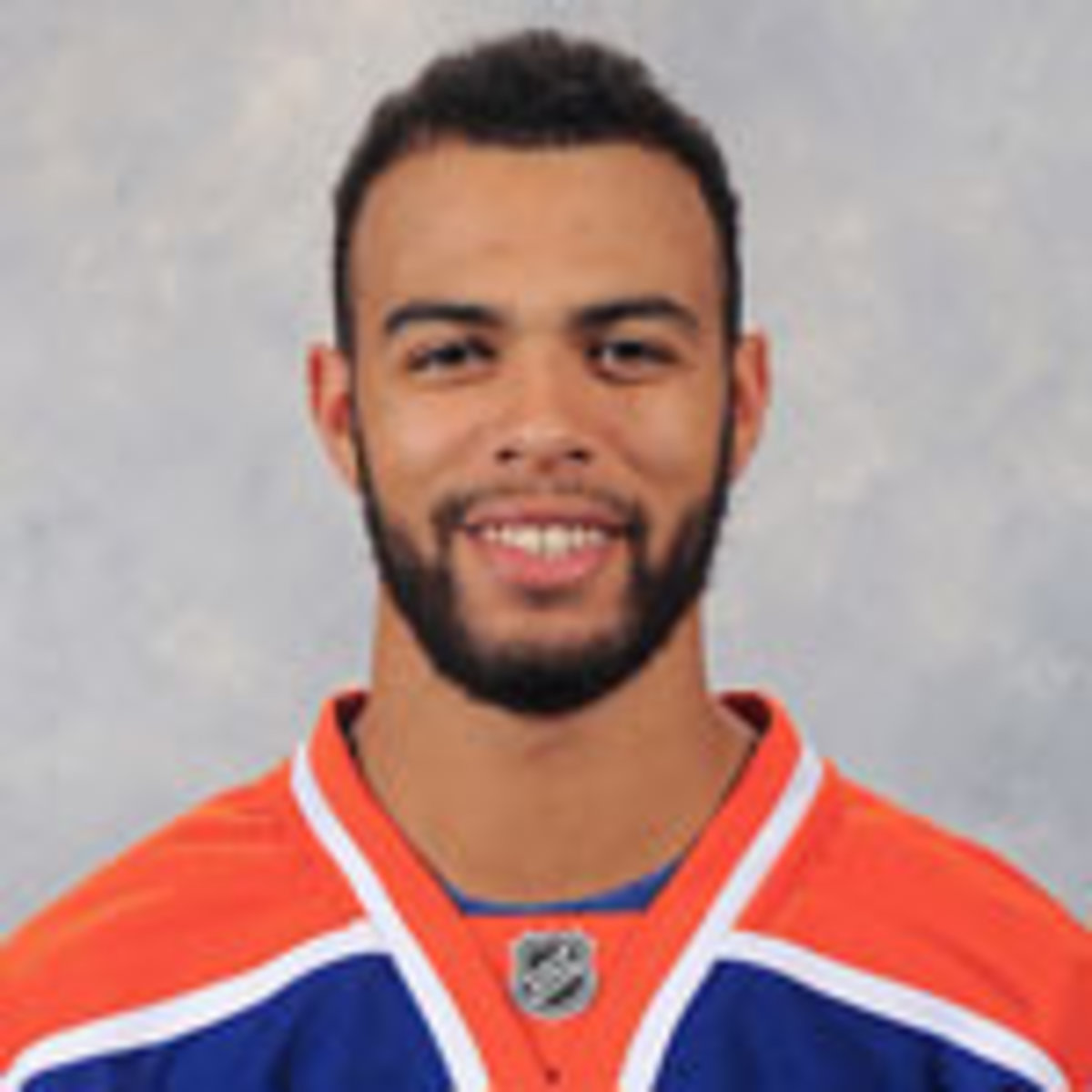
Yes, he was sent to AHL Bakersfield to start the season, but don’t expect Nurse to stay down on the farm for long. He’ll either be the first recall in case of injury, or at the moment Edmonton’s braintrust recognizes its blue line is shy of mobility and physicality, two qualities Nurse brings to the table in abundance. That ability to make the highlight reel hit or deliver a brilliant pass in transition or simply skate his way out of trouble ensures that he’ll be a valuable add at some point soon.
Defenseman: Noah Hanifin, Carolina Hurricanes
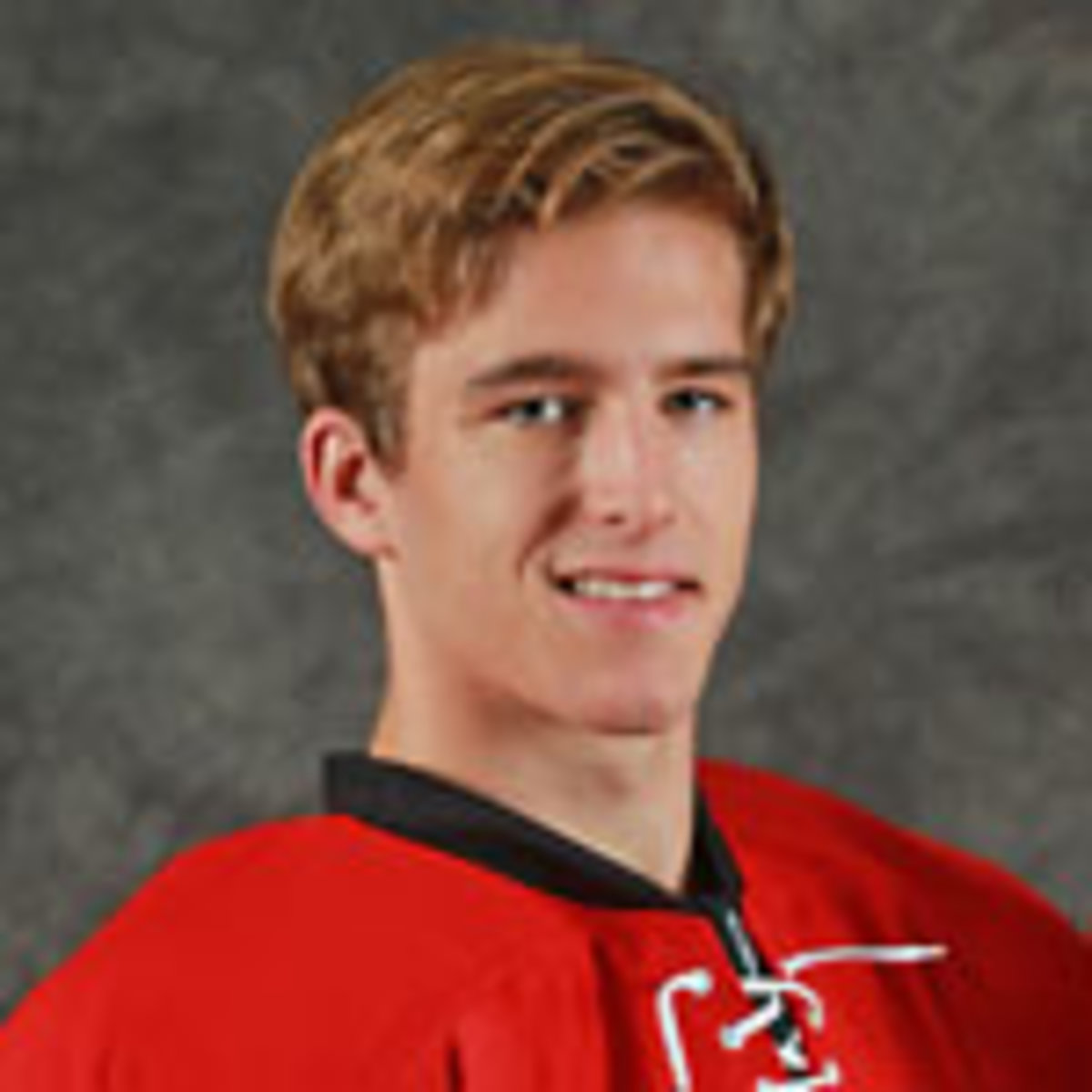
Could the fifth pick in this year’s draft emerge as the second consecutive blueliner to capture the Calder? Probably not, but you have to believe the Canes will give Hanifin every opportunity to make an impact during his rookie season. The 18-year-old saw a ton of action in the preseason, averaging better than 22 minutes per night and skating on both the power play and penalty kill. While coach Bill Peters will likely scale that back to start the regular season, Hanifin could play himself into a significant role before long. His skating and hockey sense should go a long way toward easing his transition from college to the pros, and eventually make him a big contributor to this rebuilding squad.
Forward: Connor McDavid, Edmonton Oilers
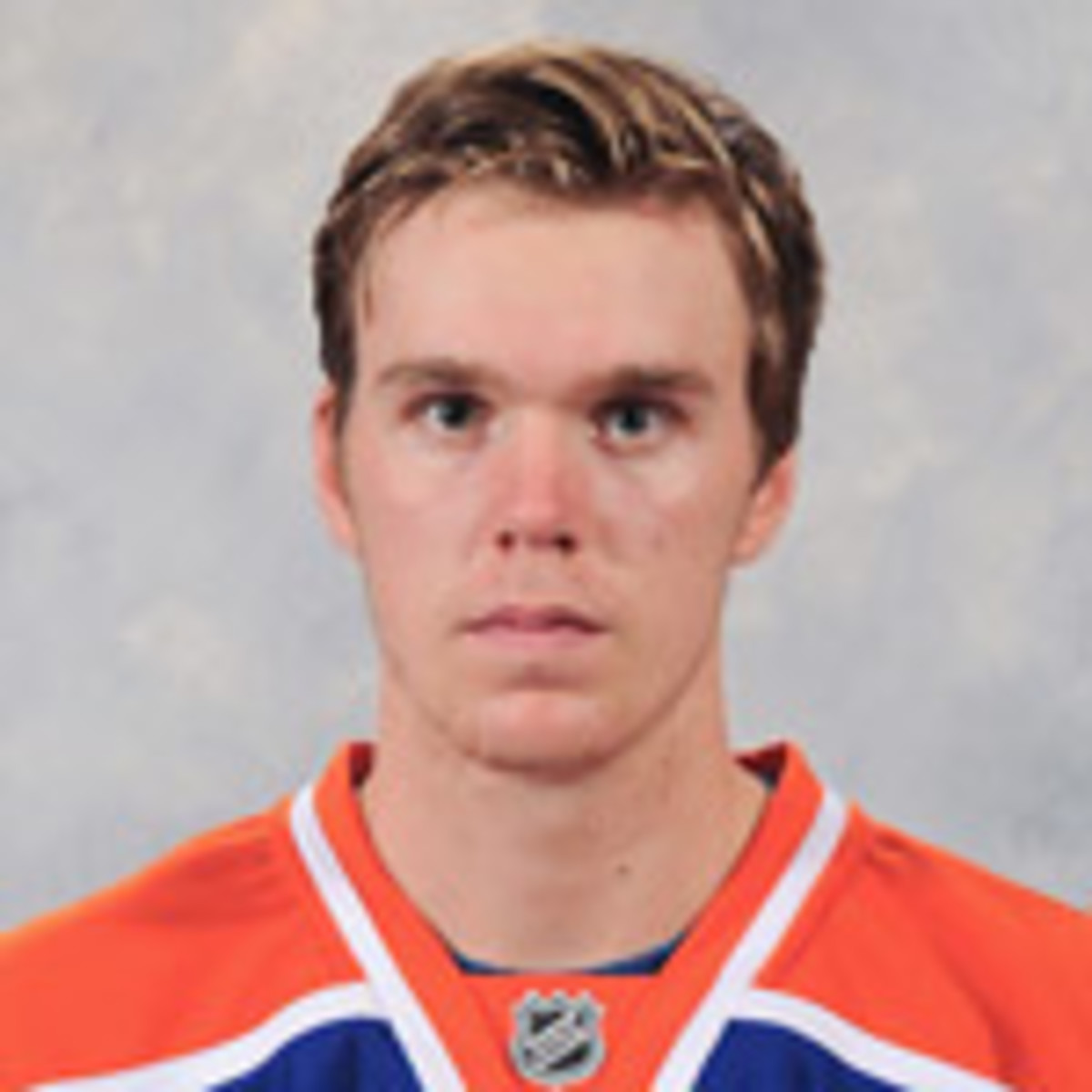
It’s been a decade since a rookie last scored 100 points. Could McDavid be the next to join the century club? It seems unlikely—after all, Jamie Benn won the Art Ross Trophy with just 87 points last season—but McDavid is such a unique talent that Steven Stamkos suggested, “He’s better than me right now!” McDavid, who scored 44 goals and 120 points in just 47 games for the OHL’s Erie Otters last season, does it all. He's an elite finisher, a crafty playmaker and possesses unparalleled instincts for the game. He’ll skate with Taylor Hall on Edmonton’s top line, which should help him pile up the points.
Forward: Jack Eichel, Buffalo Sabres
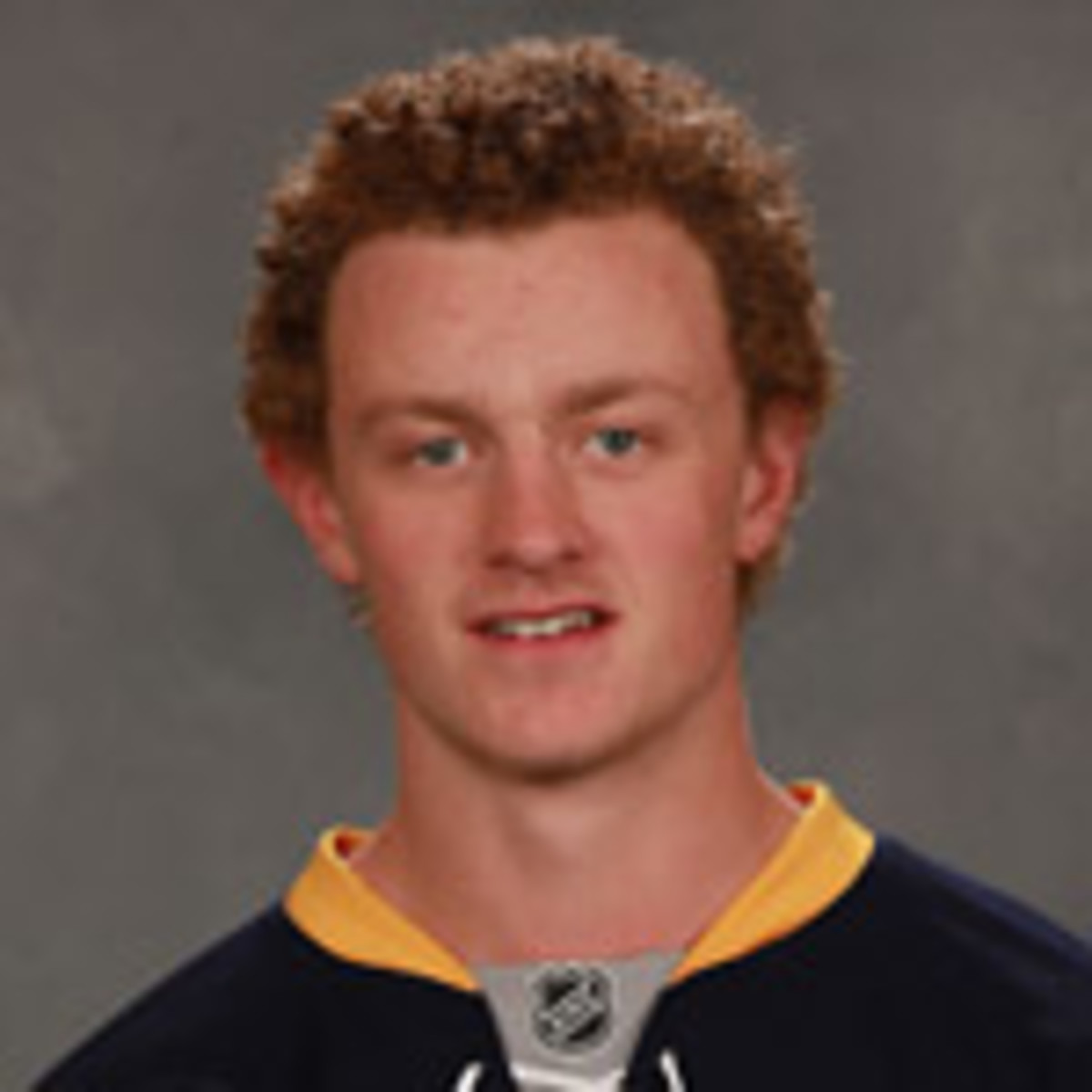
Ask around and you won't have much trouble finding a scout who believes Eichel could deliver an even better season than McDavid. This is a player who skated with men at the 2015 World Championship ahead of his draft and delivered seven points in 10 games. That performance made clear that he wasn’t just taking advantage of overmatched college kids last season. Eichel may well be the best American-born forward since Mike Modano, and he’s blessed with many of the same tools: blinding speed, terrific agility, a deft scoring touch and an uncanny ability to make those around him better. He also plays with the utmost confidence in his abilities ... and with something to prove to McDavid and his acolytes, Eichel will be skating with a chip on his shoulder as well. This could be a spectacular year.
Forward: Sam Bennett, Calgary Flames

Shoulder surgery sidelined the 19-year-old for all but one game last season, but he was a difference maker come playoff time. Bennett scored just three goals in 11 appearances but he made himself known every time he took the ice with a feisty, fearless game that sets him up as the ideal center for Calgary’s third line. He can contribute in every situation, including the penalty kill, and has the speed and creativity to become a dangerous weapon during three-on-three play.
Honorable mentions
Nikolaj Ehlers, Winnipeg Jets; Artemi Panarin, Chicago Blackhawks; Max Domi, Arizona Coyotes; Jake Virtainen, Vancouver Canucks; Ben Hutton, Vancouver Canucks; Joel Edmundsson, St. Louis Blues; Dylan DeMelo, San Jose Sharks
GALLERY: NHL's Teen Phenoms
NHL Teen Phenoms
Bobby Orr, 18, 1966-67
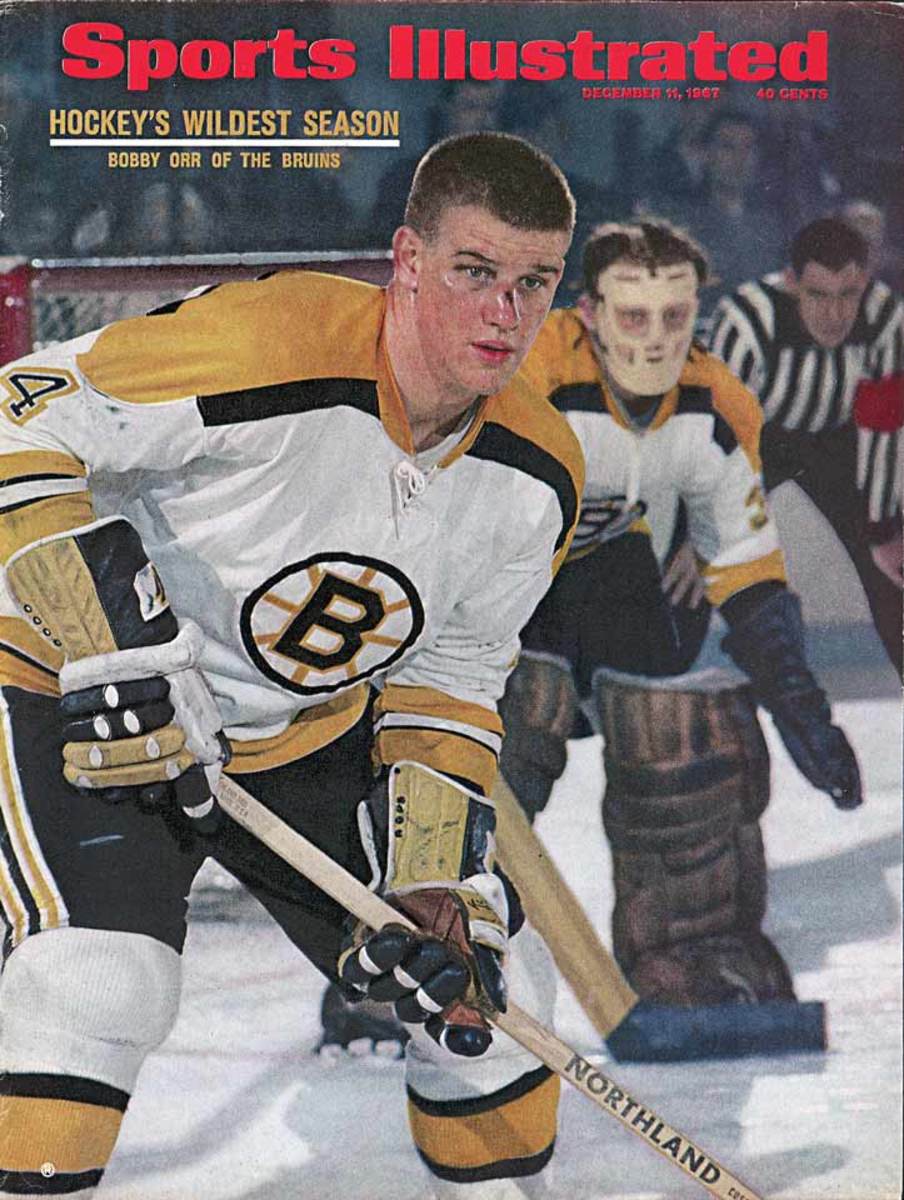
The kid was as good as expected (13-28-41 in 61 games), winning the Calder Trophy and launching a blue line revolution with his skating, passing, dynamic rushes and solid defense. Norris winner Harry Howell prophetically said, “I might as well enjoy it now because I expect it’s going to belong to Bobby Orr from now on.” He was right. Orr won it in each of the next eight seasons.
Wayne Gretzky, 19, 1979-80
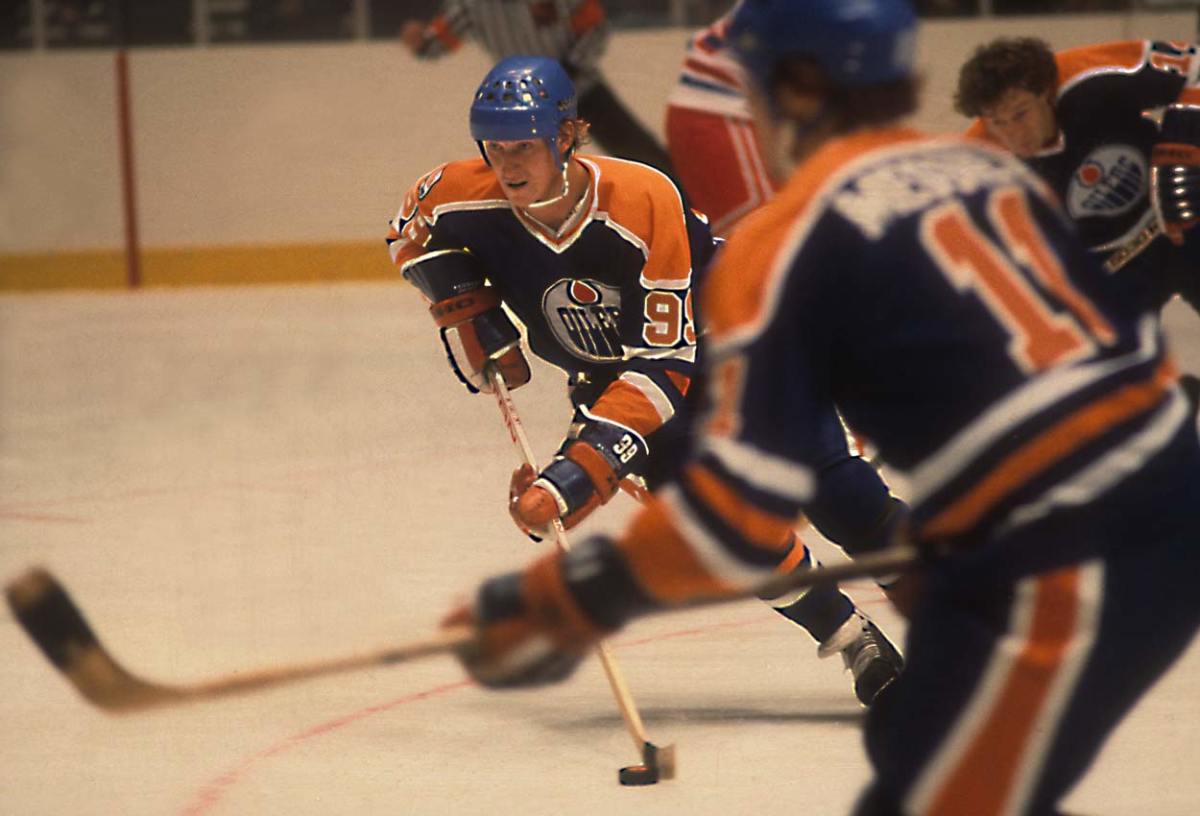
In his first NHL season, the Great One scored 51 goals and led the league with 86 assists and 137 points, good for the Hart and Lady Byng trophies, but not the Calder. His previous season in the rival WHA made him ineligible for rookie of the year, which went to another 19-year-old.
Ray Bourque, 19, 1979-80
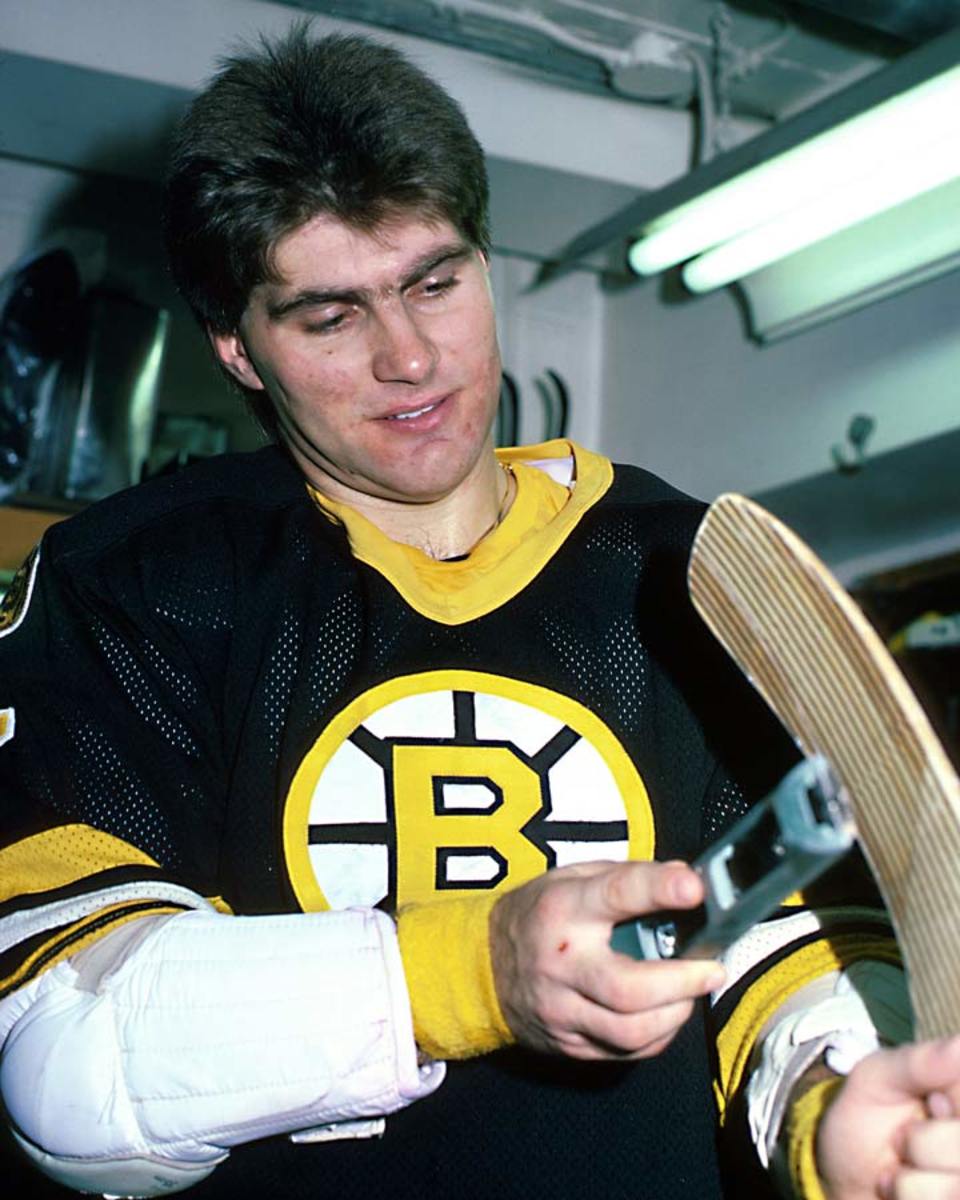
The eighth pick in the ’79 draft launched his Hall of Fame career by going 17-48-65 with a dazzling +52 to earn Norris votes, a first team NHL All-Star nod and the distinction of being the answer to a trivia question: Who won the Calder during Wayne Gretzky’s first season in the NHL?
Dale Hawerchuk, 18, 1981-82
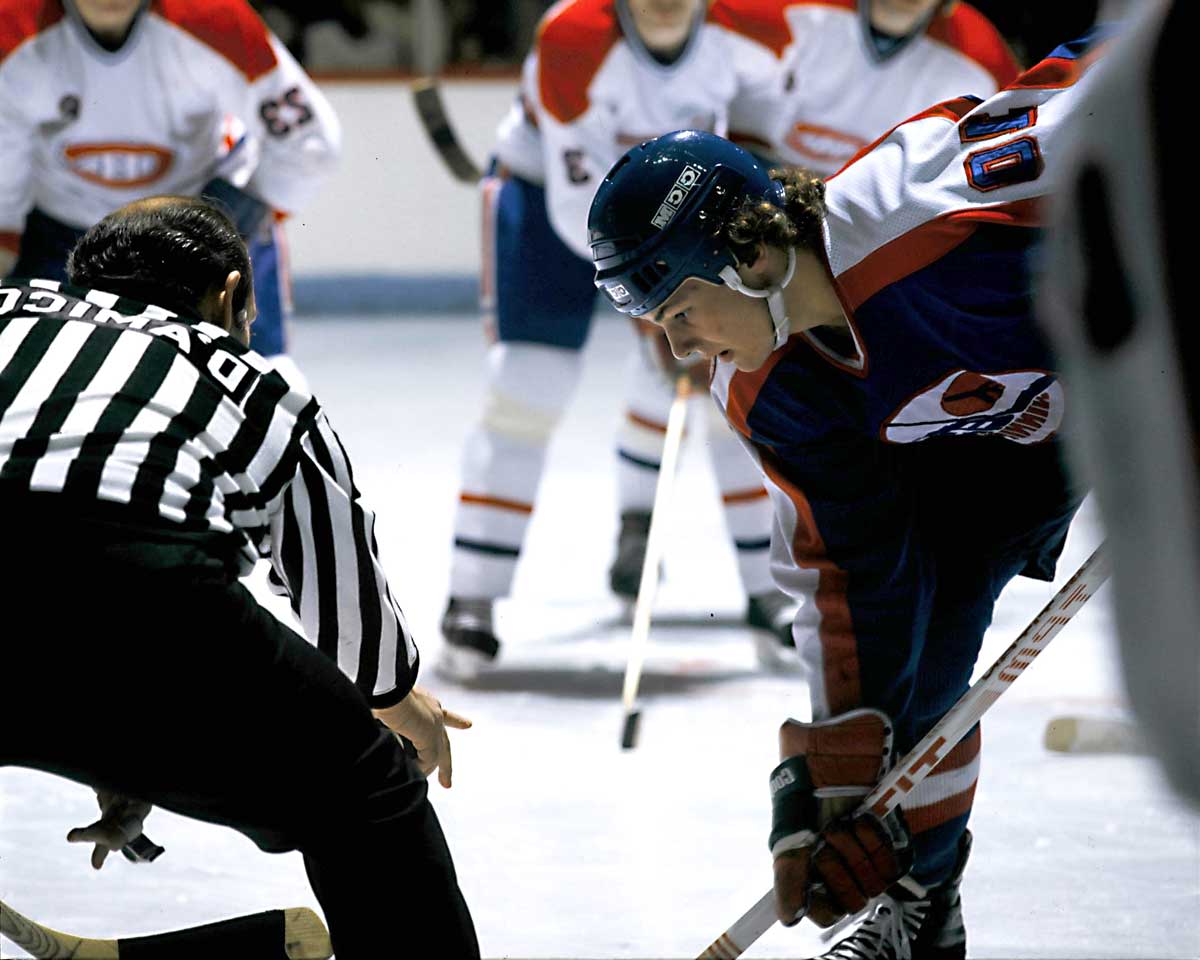
The Canadian Major Junior Player of the Year was the first pick in the ’81 NHL draft after his 81-goal, 183-point season in the QMJHL. An agile, quick playmaker and scorer, Hawerchuk won the Calder by becoming the first NHL rookie to post a 40-goal, 100-point campaign. He went on to become a Hall of Famer.
Steve Yzerman, 18, 19883-84
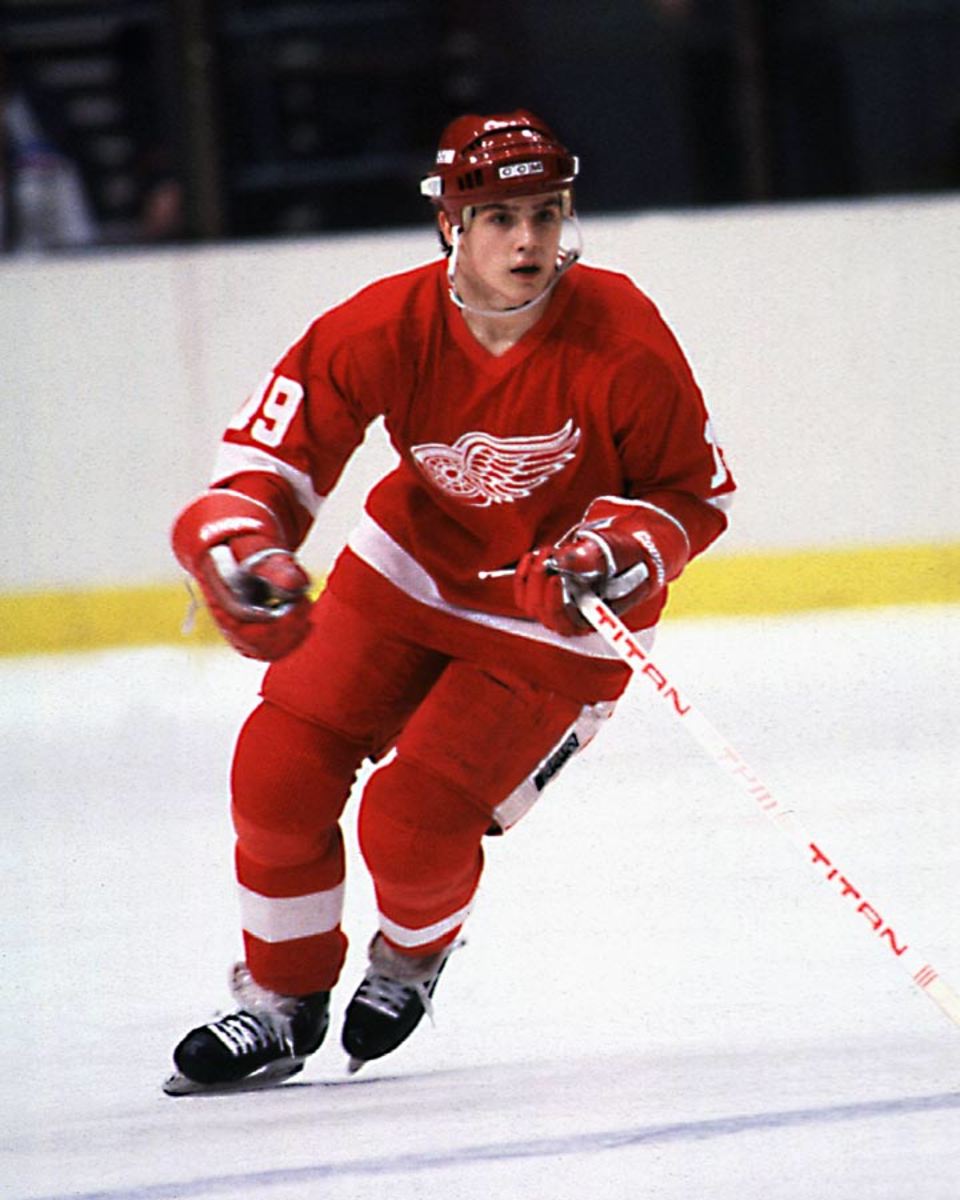
The fourth pick of ‘83—after Brian Lawton (North Stars), Sylvain Turgeon (Whalers) and Pat LaFontaine (Islanders)—Yzerman was undersized, highly skilled and gritty. He had to win a job in training camp, but stuck and went 39-48-87 in 80 games, finishing second in the Calder race behind Sabres goalie Tom Barrasso.
Tom Barrasso, 18, 1983-84
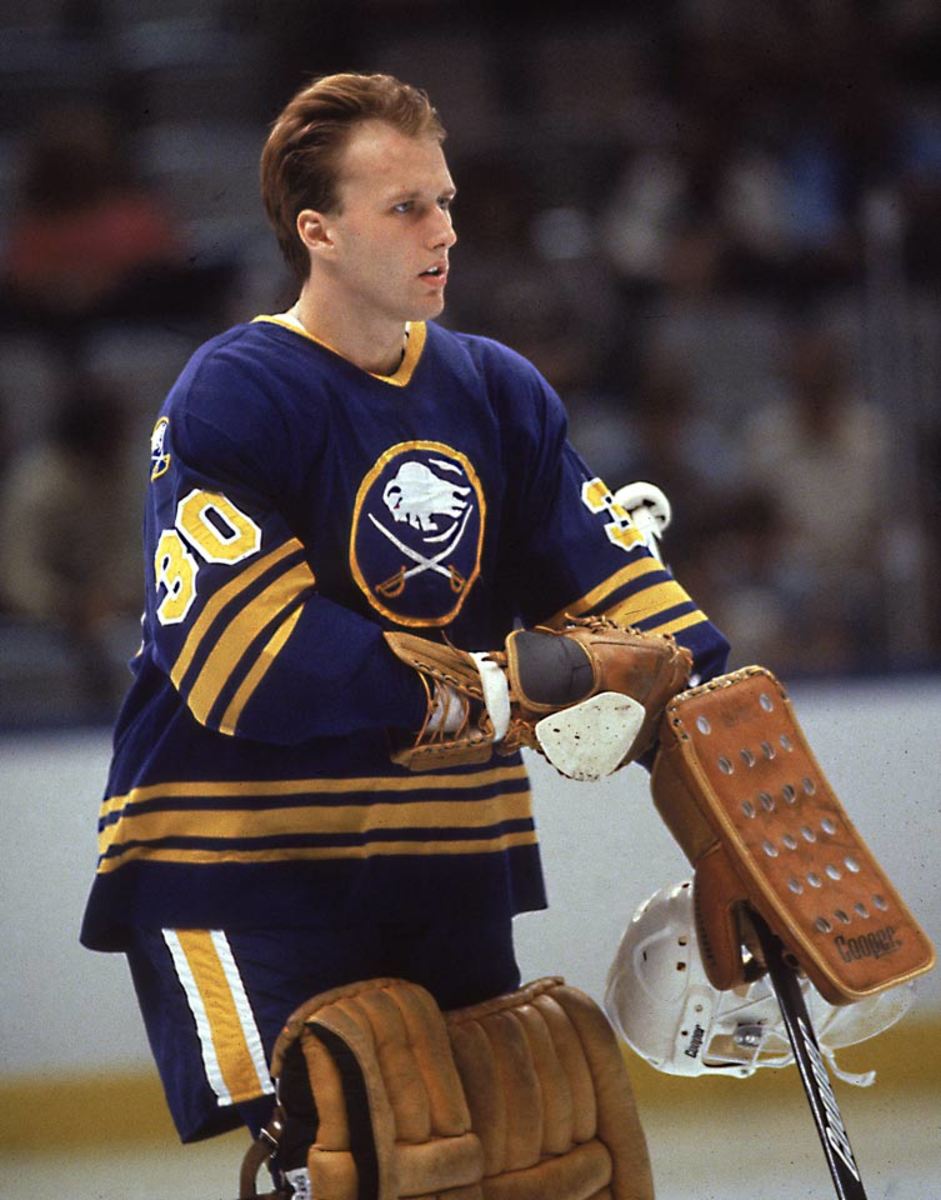
Entering the NHL out of high school, the fifth pick in the ’83 draft became the first goalie to win the Calder since Canadiens legend Ken Dryden in 1972, going 26-12-3, with a 2.84 GAA and .893 save pct. in 42 games. His performance also earned him the Vezina, first team All-Star honors, and a spot on Team USA for the ’84 Canada Cup tournament.
Mario Lemieux, 19, 1984-85
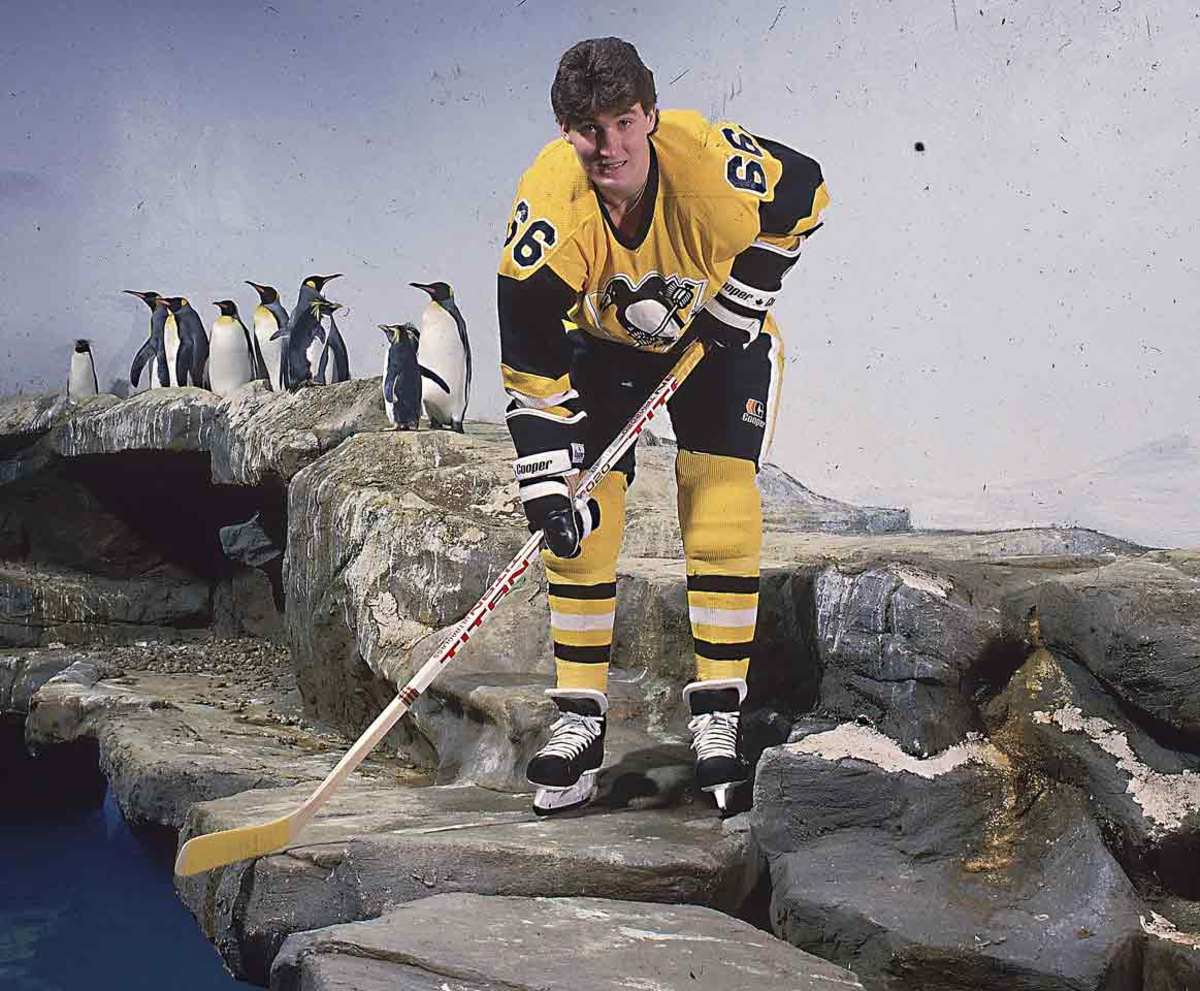
After the towering Super Mario posted a mindblowing 133 goals and 149 assists in his final junior season, it was easy to believe the Penguins tanked to secure the first pick in the ’84 draft. (There was no lottery at the time.) Lemieux scored on his first NHL shift and took the Calder with his 43-57-100 rookie season.
Pat LaFontaine, 19, 1984-85
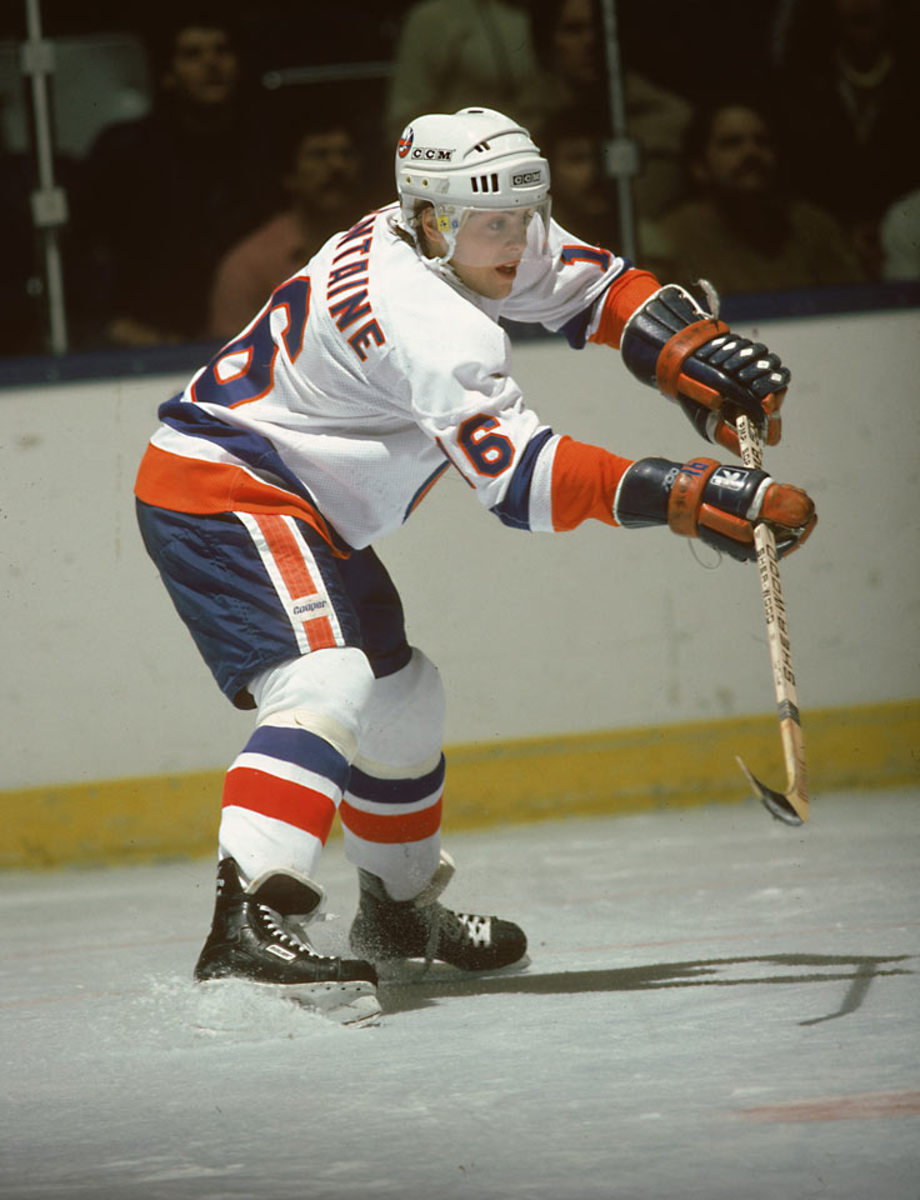
An American out of the QMJHL where he scored 104 goals and 234 points in only 70 games, LaFontaine was drafted third in ‘83. He played for Team USA at the ’84 Olympics before making his NHL debut with 13 goals in 15 late-season games, then helped the Isles reach the Stanley Cup Final. As 19-year-old rookie in ’84-85 he went 19-35-54 in 67 games, going on to a Hall of Fame career that was cut short by concussions.
Jimmy Carson, 18, 1986-87
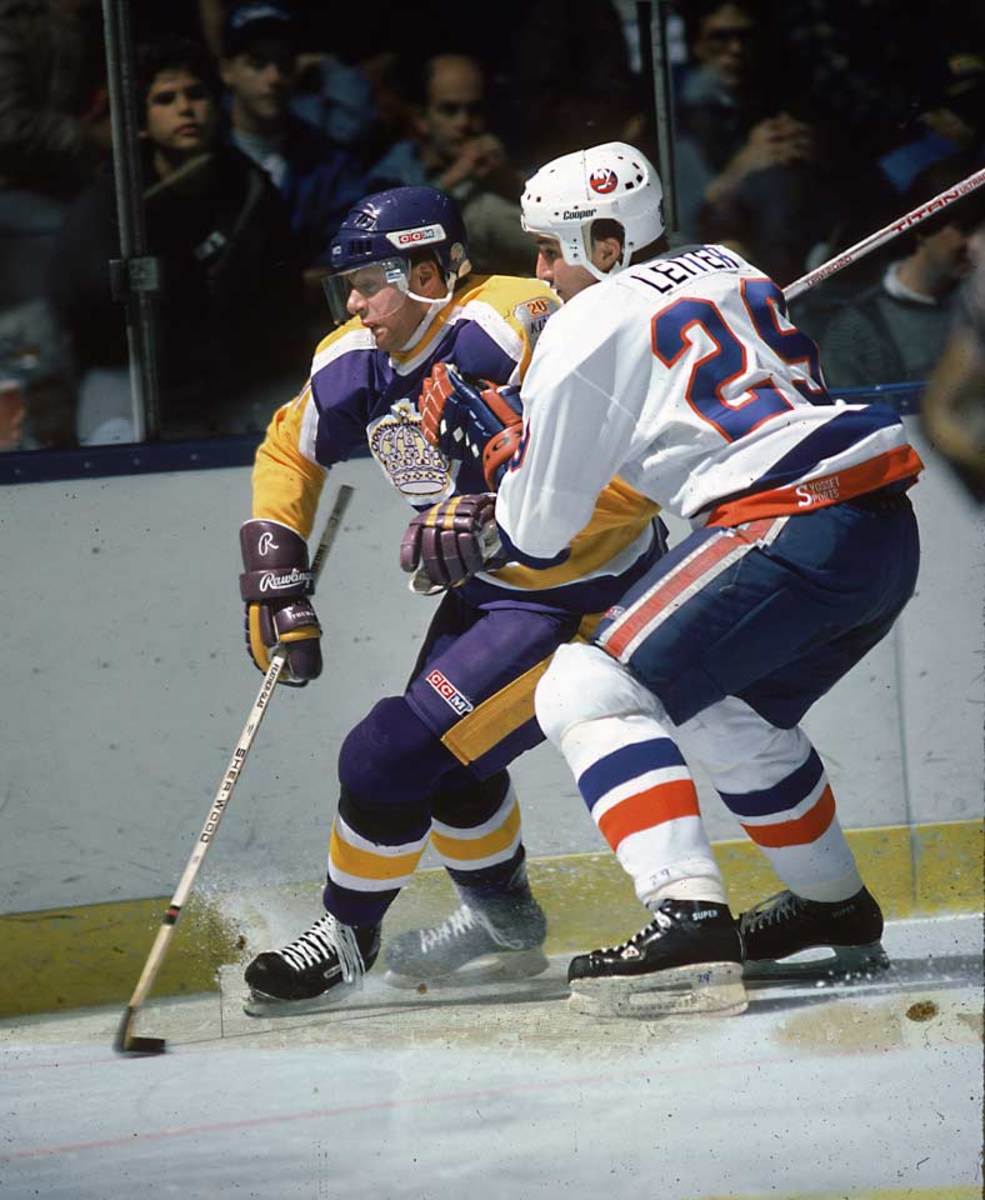
Remembered as the Kings’ key player in their trade for Wayne Gretzky, Carson was the second pick in the '86 draft, after winger Joe Murphy (Detroit). A natural scorer with a mostly one-way game, Carson produced 39 goals and 79 points as a rookie, finishing behind teammate Luc Robitaille and Flyers goalie Ron Hextall in the Calder voting. At 19, he scored 55 goals and 107 points before being dealt. His career was brief, though, and he retired at 29.
Mike Modano, 19, 1989-90
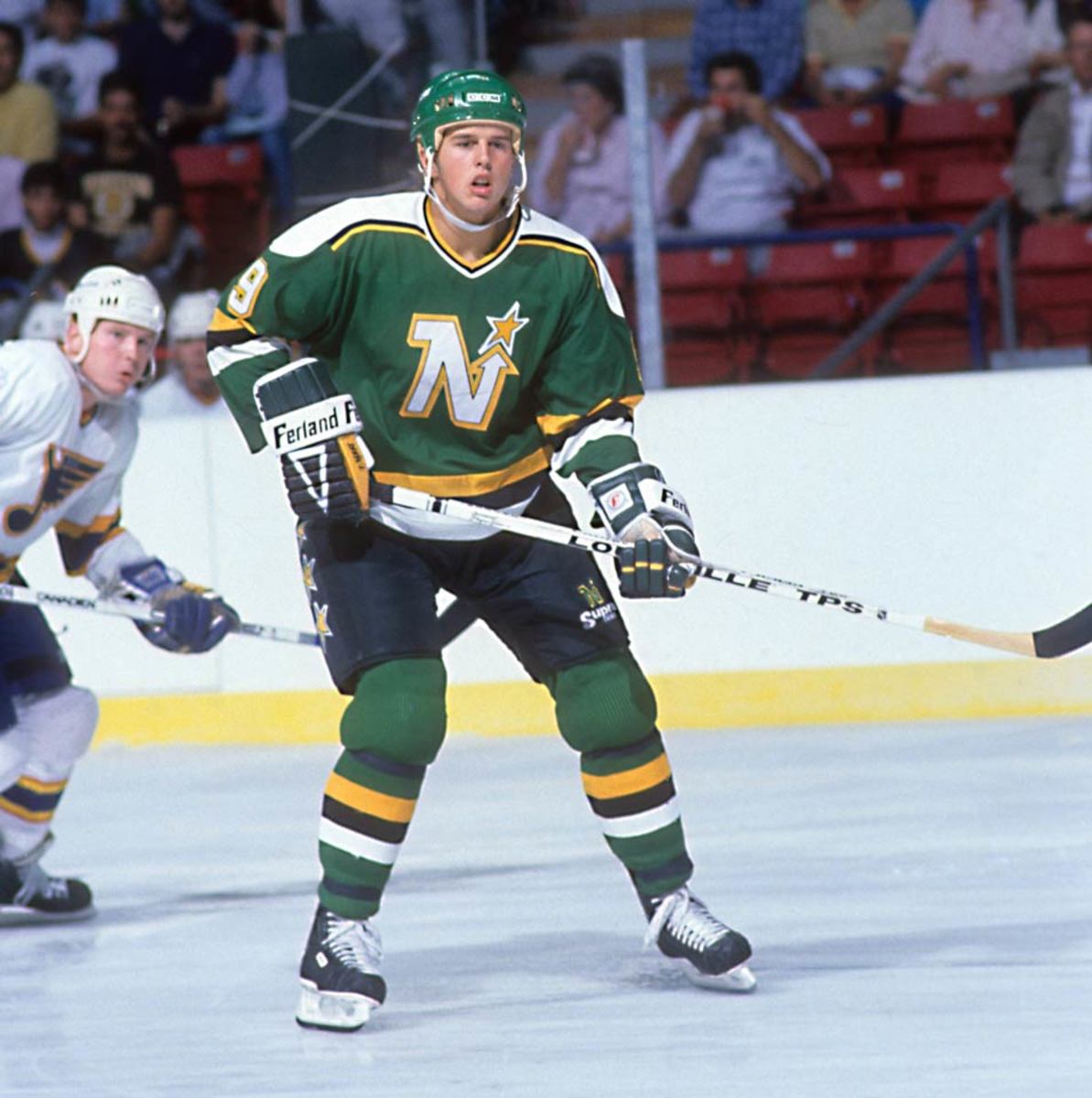
One of the greatest American players of all time, the speedy, explosive center with the lethal shot was the first pick in 1988 out of the WHL and Team USA. Modano made his NHL debut during the 1989 playoffs and then went 29-46-75 the following season, finishing second to 31-year-old Sergei Makarov of the Flames in the Calder voting.
Eric Lindros, 19, 1992-93
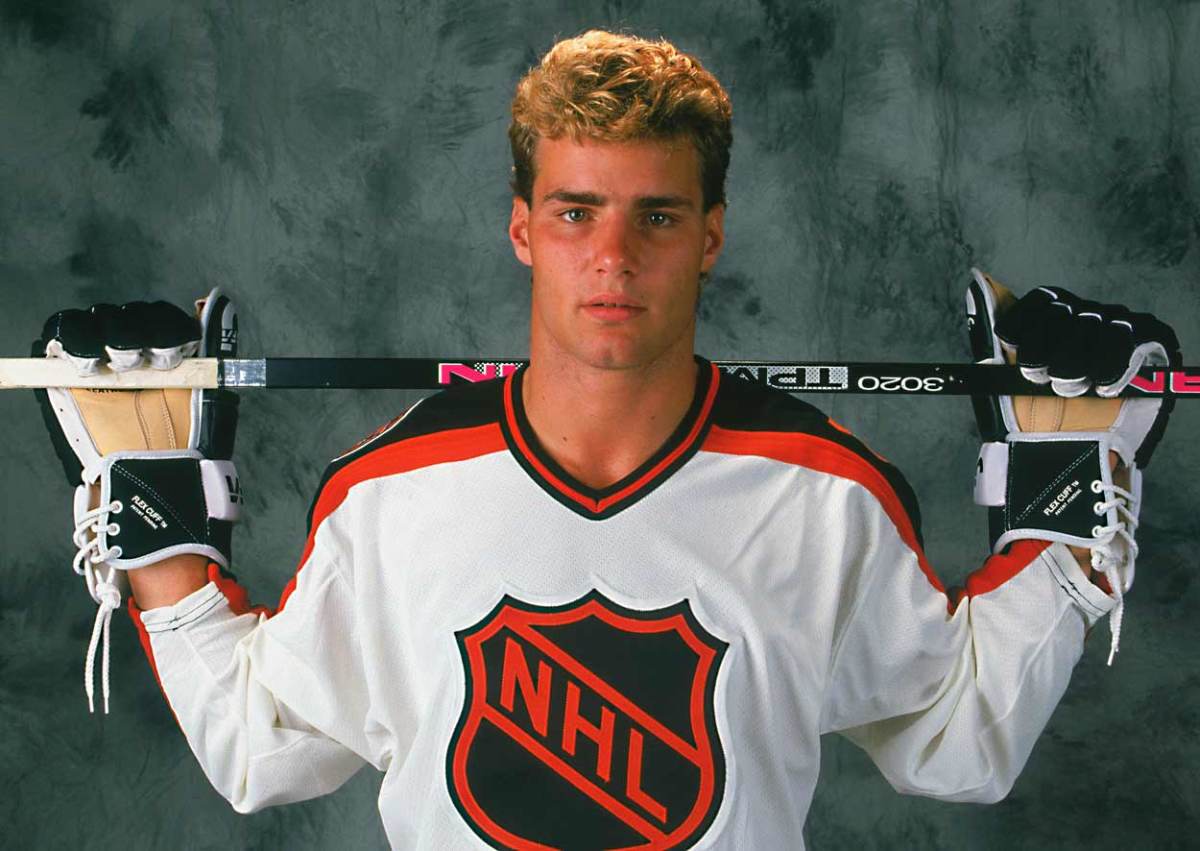
The Next One was a junior superstar when he was chosen first by Quebec in the 1991 draft but infamously fought for the trade to Philadelphia that sent Peter Forsberg and a parcel of players the other way. Big, strong and offensively gifted, Lindros scored 41 goals and 75 points for the Flyers but finished fourth in the Calder vote won by Teemu Selanne who’d set the NHL rookie record of 76 goals with the Jets.
Vincent Lecavalier, 18, 1998-99
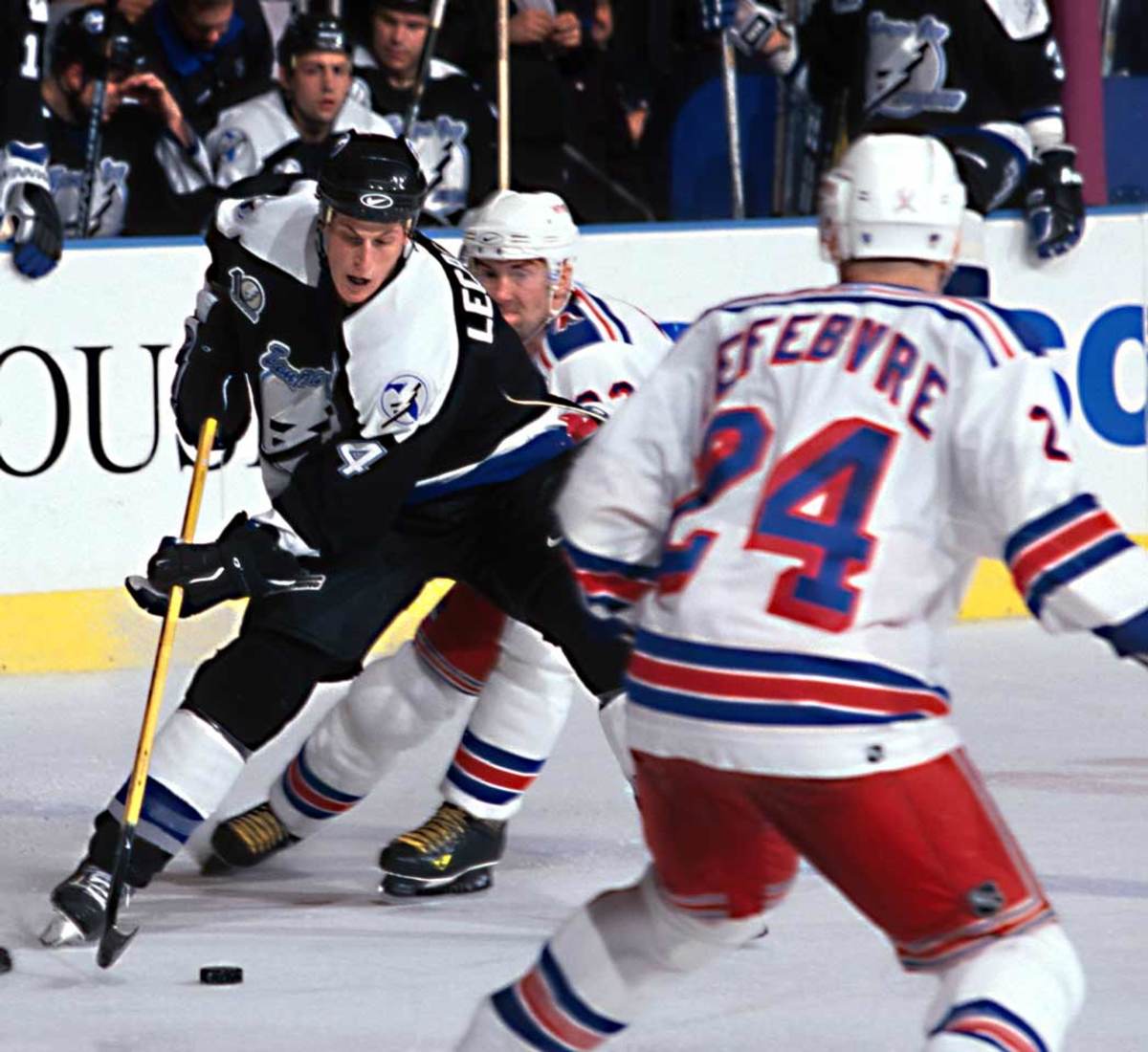
After 86 goals and 217 points in two QMJHL seasons, the speedy, skilled 6’ 4” center was drafted first in 1998 and billed by the Lightning’s owner as a potential Michael Jordan of hockey. Lecavalier had a modest rookie campaign (13-15-28, -19 in 82 games) and was a distant 14th in the Calder voting, but he improved to 25-42-67 the following season and was named the NHL’s first teenaged captain.
Ilya Kovalchuk, 18, 2001-02
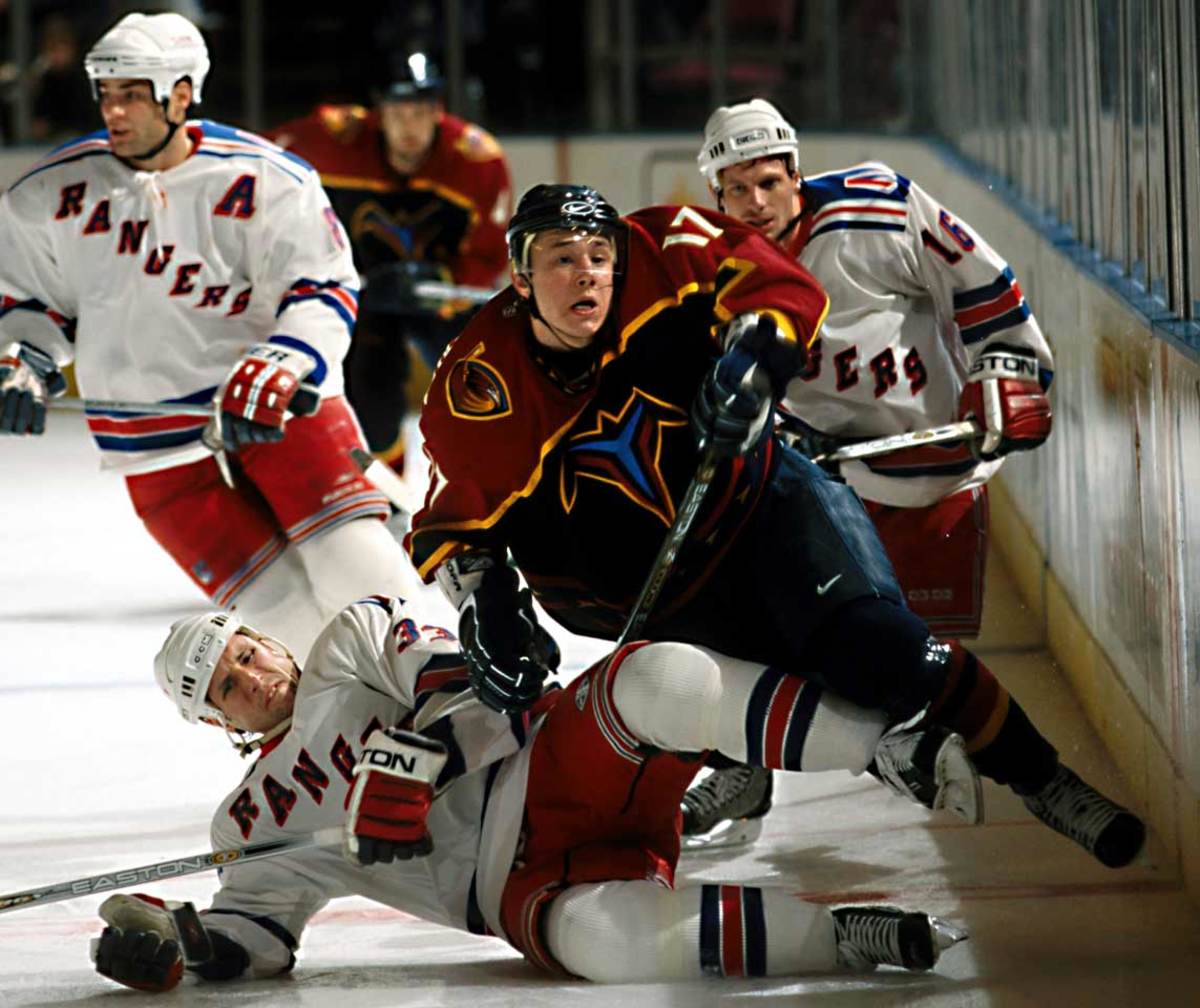
An international star, he was the first Russian ever chosen first in an NHL draft (2001). He went 29-22-51 in 65 games as a rookie but suffered a shoulder injury and finished second in the Calder vote behind Thrashers teammate Dany Heatley, 21. A fast, exceptional puckhandler and explosive scorer, Kovalchuk upped his goal (38) and points (67) totals at 19, setting up a run of six straight 40-plus goal seasons.
Sidney Crosby, 18, 2005-06
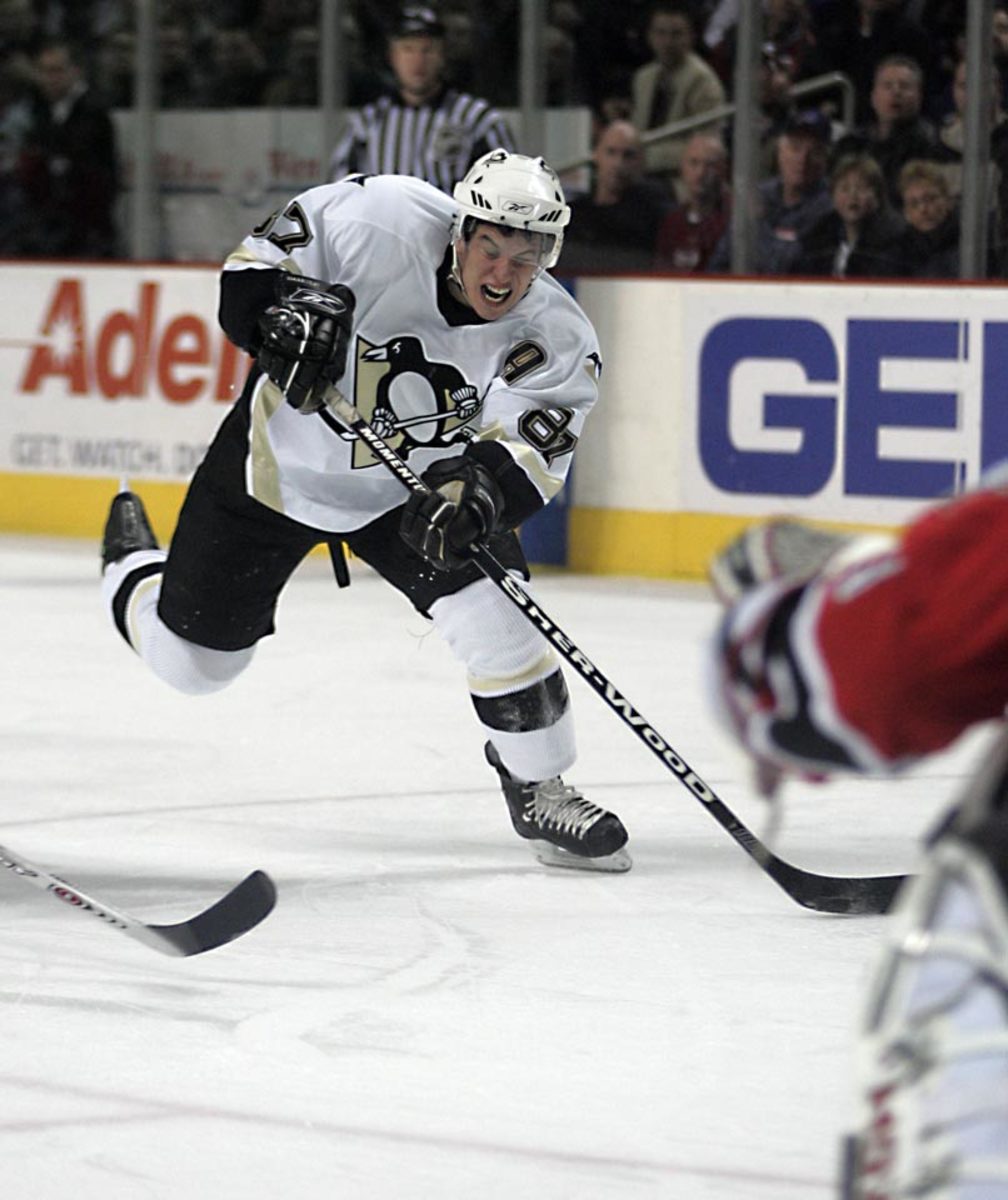
The grand prize in the 2005 lottery, Sid The Kid was a bona fide prodigy who was compared to Wayne Gretzky. Crosby scored 39 goals and 102 points as a rookie but the Calder went to a 20-year-old named Ovechkin. The next season, at 19, Crosby won the Hart, Pearson and Ross trophies with a 36-84-120 slate that made him the youngest NHL scoring champ of all time. He also became the NHL’s second teen captain.
Patrick Kane, 19, 2007-08
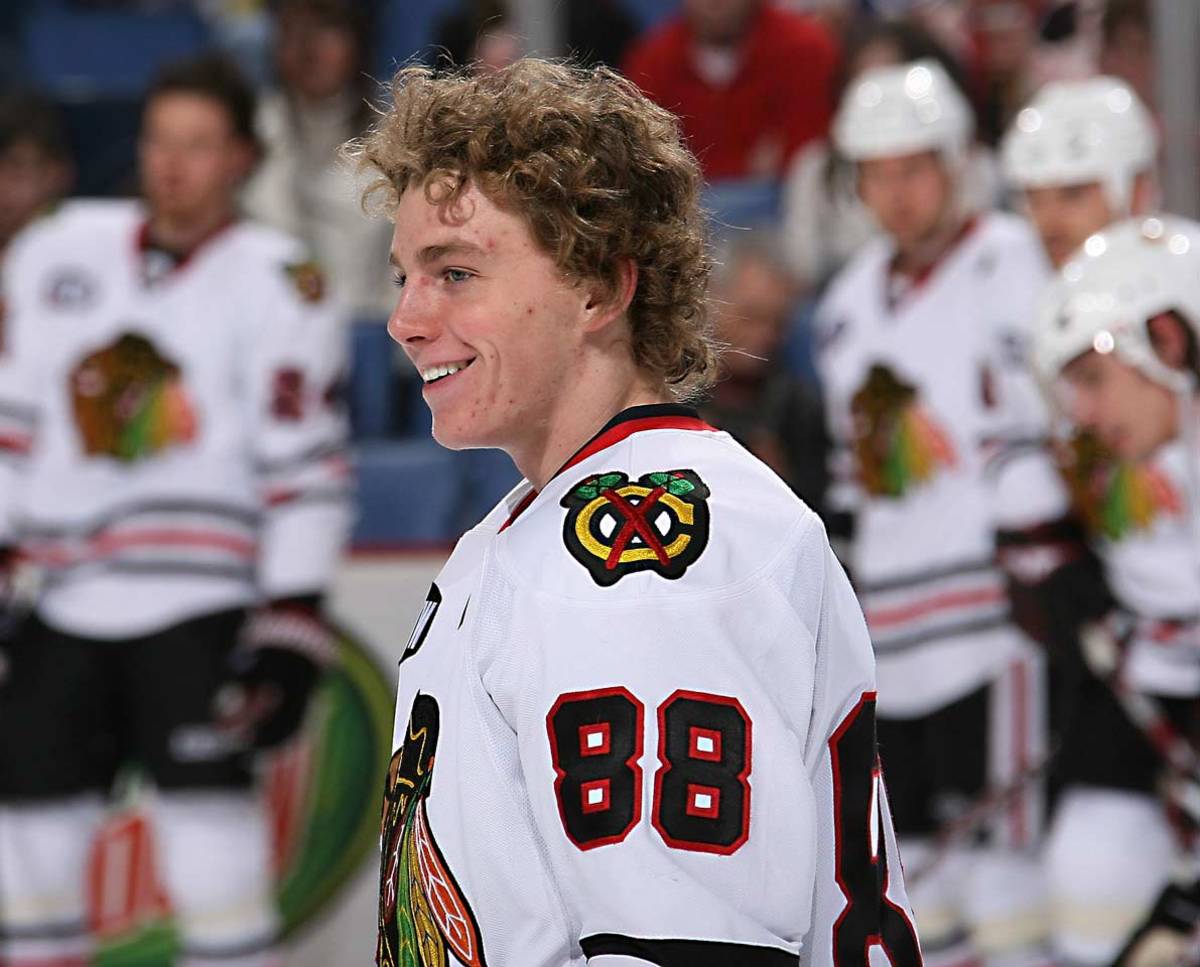
An American stickhandling wizard out of the OHL, Kane was the first pick in the 2007 draft. He dispelled concerns about his size (5’ 9”, 160) by playing in all of Chicago’s 82 games, going 21-51-72 and beating out 19-year-old teammate Jonathan Toews and Washington’s Nicklas Backstrom for the Calder.
Steven Stamkos, 18, 2008-09
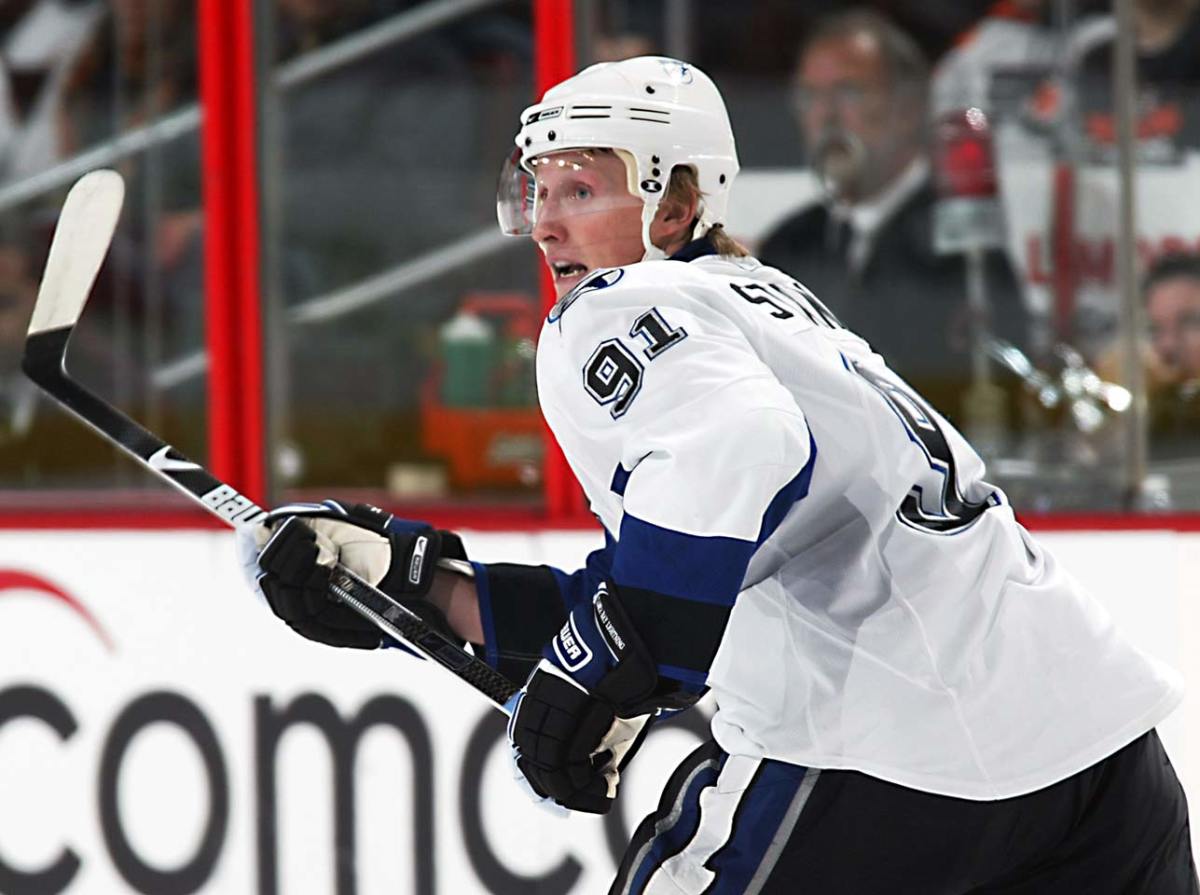
“Seen Stamkos?” the billboards in Tampa asked after the Lightning took the coveted sniper with the first pick in the 2008 draft. His rookie season was solid if unspectacular (23-23-46, -13) and he finished ninth in the Calder voting, but the next season, at 19, Stamkos hit the 50-goal mark, leading the NHL.
John Tavares, 19, 2009-10
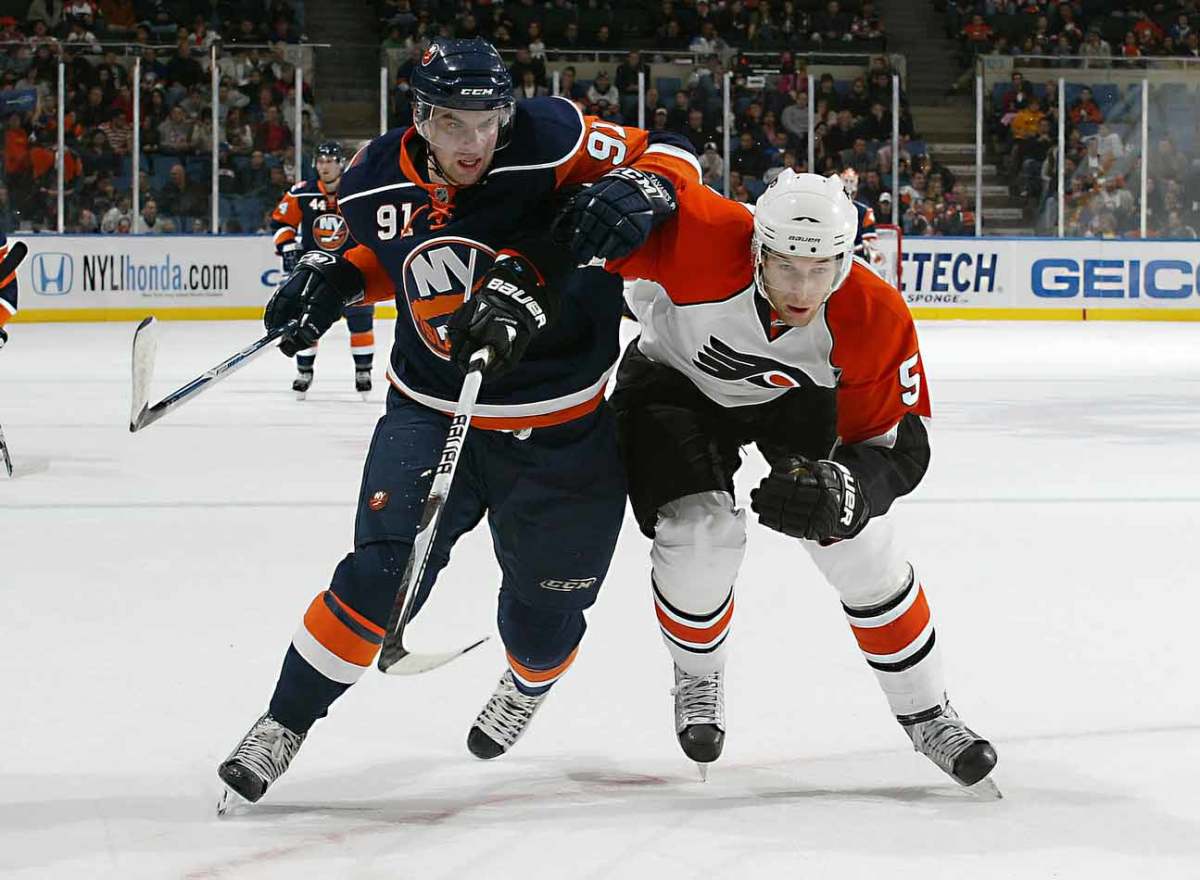
The first player to be given “exceptional” status by the OHL (making him eligible to play a year early at 15), Tavares broke Wayne Gretzky’s league mark for goals by a 16-year-old, with 72. The first pick in the 2009 NHL draft, he went a solid 24-30-54 for the Islanders and finished fifth in the Calder voting won by towering 19-year-old Sabres defenseman Tyler Myers, the 12th selection.
Victor Hedman, 19, 2009-10
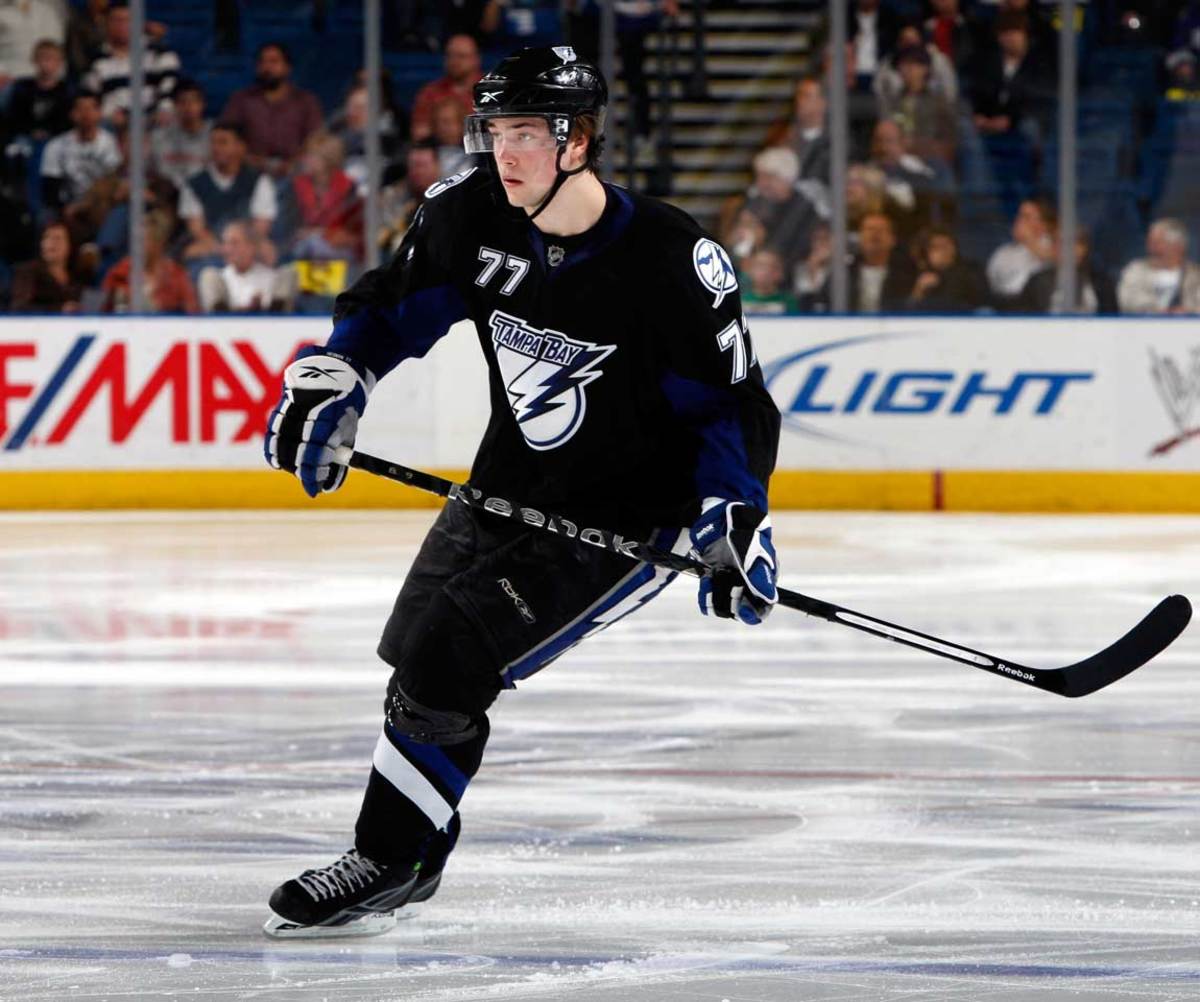
The highly regarded Swedish defenseman was the second pick after John Tavares. Big (6’ 6”, 230) and blessed with all-around skills that invited comparisons to Chris Pronger and Zdeno Chara, he patterned his game after Red Wings great Nicklas Lidstrom. Hedman finished ninth in the Calder voting after a 4-16-20, -3 rookie campaign and needed several seasons to mature into the star and cornerstone everyone expected he would become.
Taylor Hall, 19, 2010-11
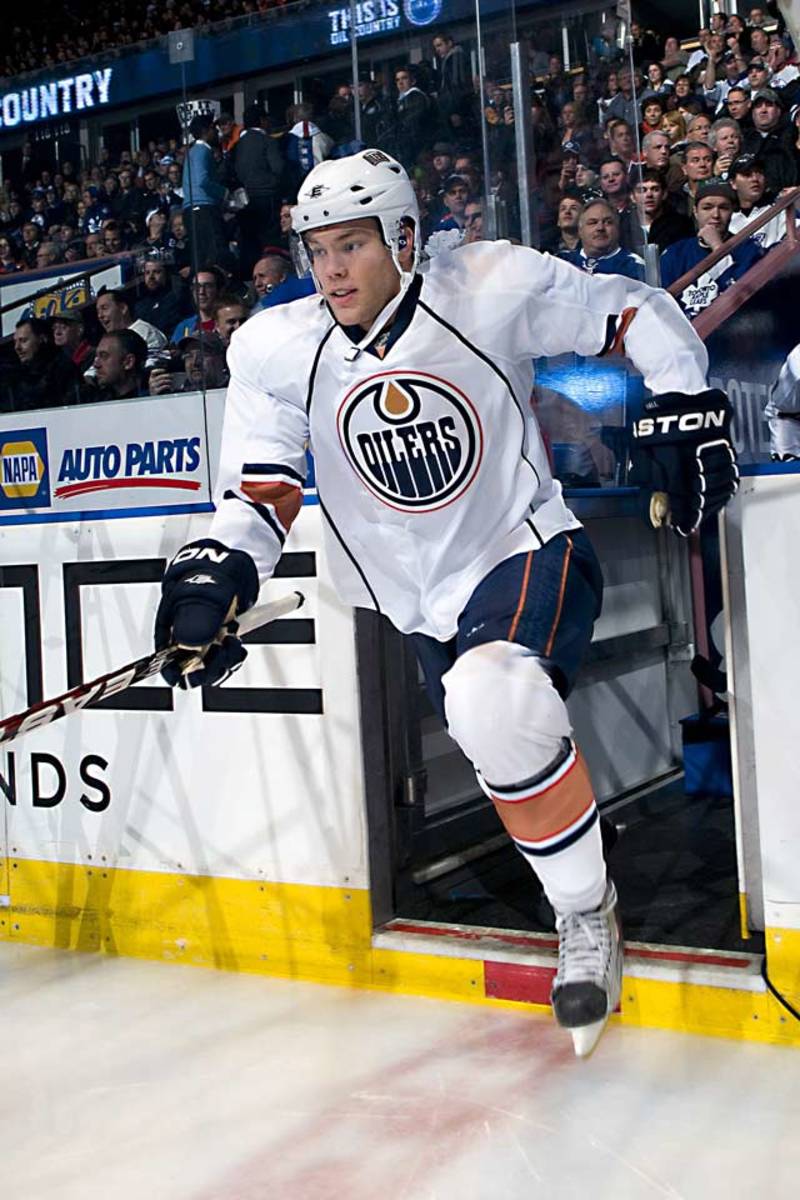
The big question on draft night 2010 was Taylor or Tyler (Seguin)? Hall, the big, speedy winger who’d posted 106 points in 57 OHL games, was the first pick. He went 22-20-42 in 65 games with struggling, rebuilding Edmonton, his season ended by an ankle sprain in March. The Calder was won by Carolina’s 18-year-old Jeff Skinner (31-32-63), the seventh overall pick.
Tyler Seguin, 19, 2010-11
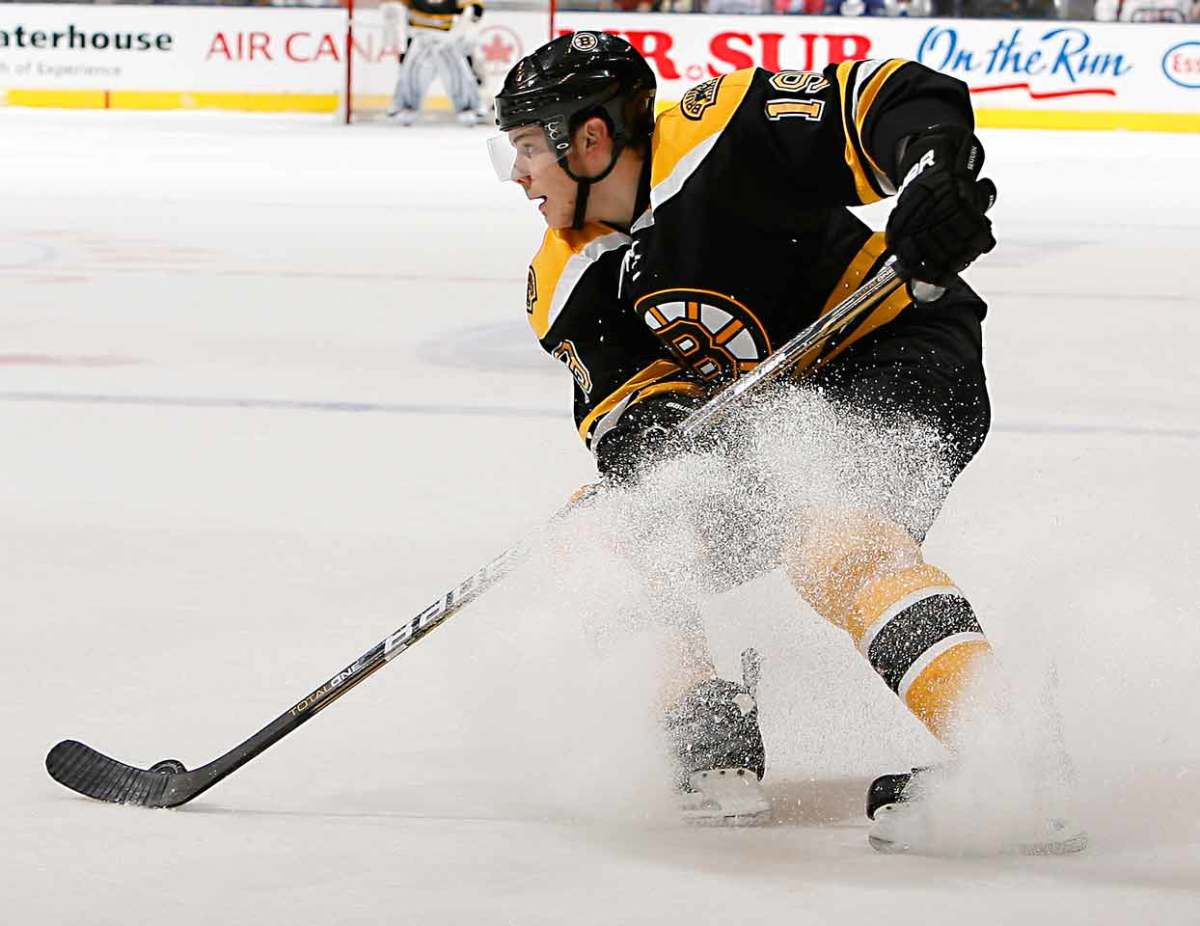
The OHL MVP was the second pick in the 2010 draft. A creative playmaker and scorer with a defensive upside, Seguin put up modest numbers (11-11-22 in 74 games) under the weight of great expectations, received no Calder votes and spent Boston’s first 11 postseason games as a healthy scratch. When he saw action, he became the first teen to score four points in a playoff match (Eastern final Game 2 vs. Tampa Bay).
Ryan Nugent-Hopkins, 18, 2011-12
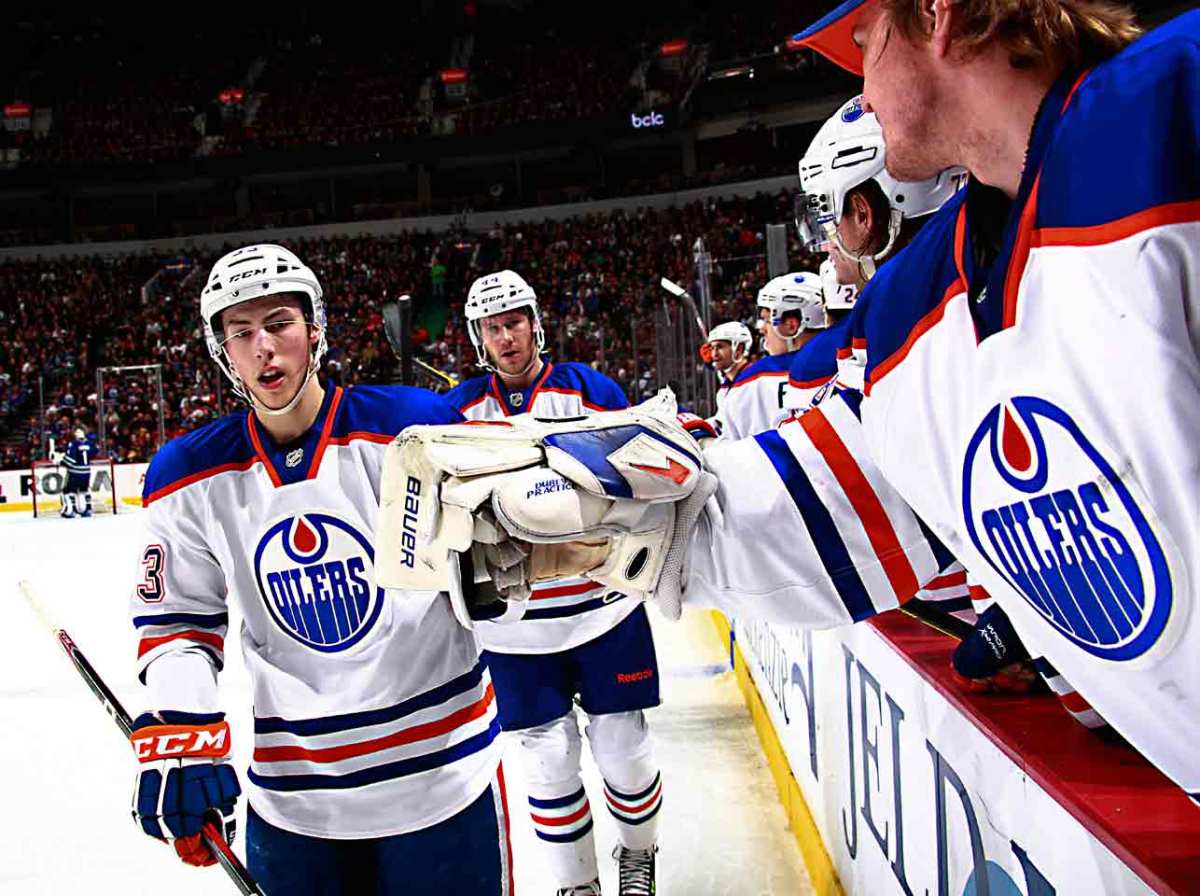
A deft playmaker, the top pick of 2011 tied for first in rookie scoring (18-34-52 in 62 games) but finished second behind Colorado’s Gabriel Landeskog, 19, for the Calder, only the third time teens were 1-2 in the voting, and first since Bryan Berard and Jarome Iginla in ’97. Three others earned votes: Hurricanes defenseman Justin Faulk, 19, Flyers center Sean Couturier, 19, and Devils blueliner Adam Larsson, 19.
Gabriel Landeskog, 19, 2011-12
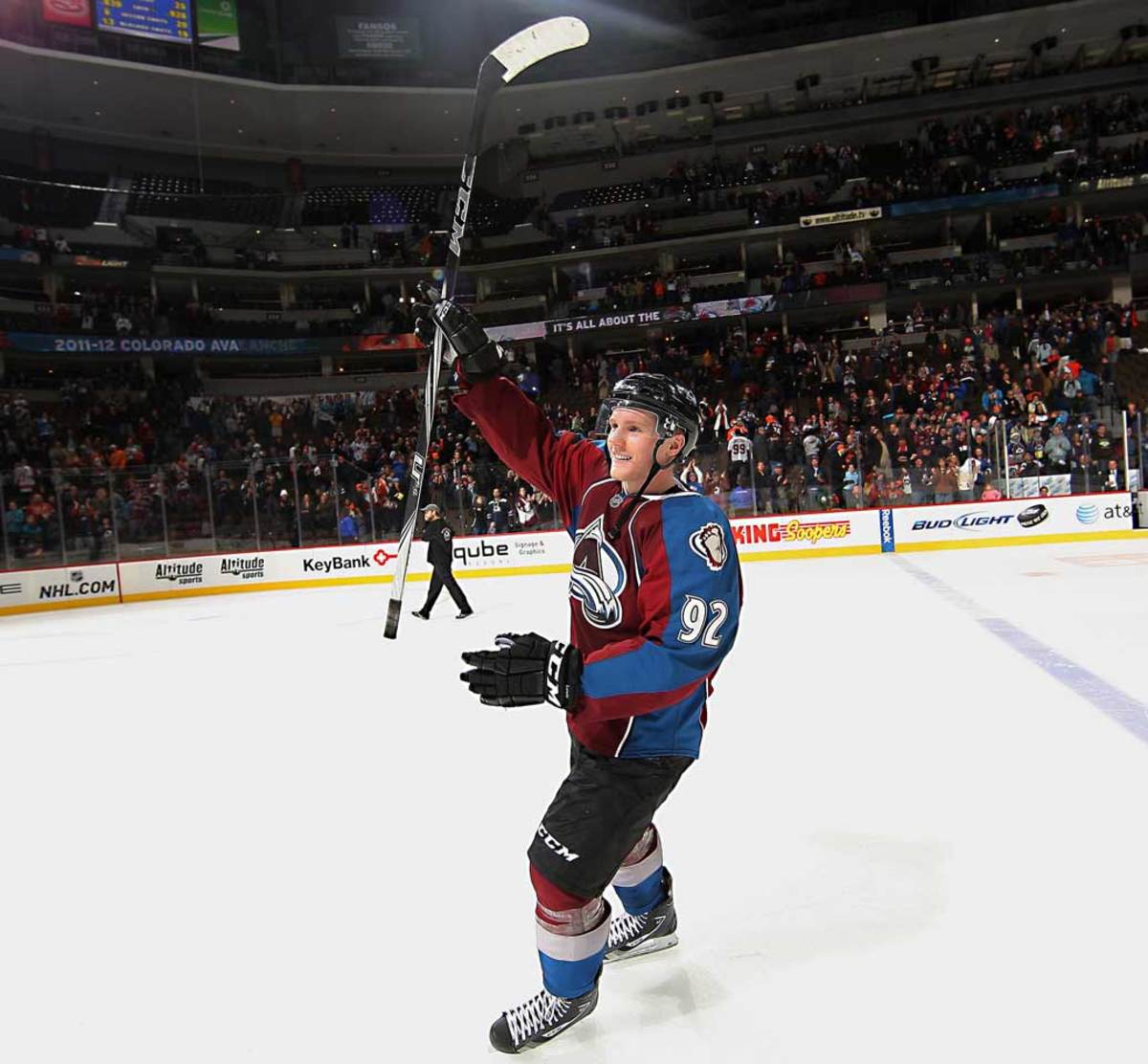
A natural leader, the calm, skilled winger who captained Sweden’s U-16, U-17 and U-18 teams was the second pick in 2011 draft. The only member of his rookie class to play all of his team’s 82 regular season games, he won the Calder by going 22-30-52 with a stellar +20 rating. The Avs then made him the youngest player in NHL history to wear the C.
Nathan MacKinnon, 18, 2013-14
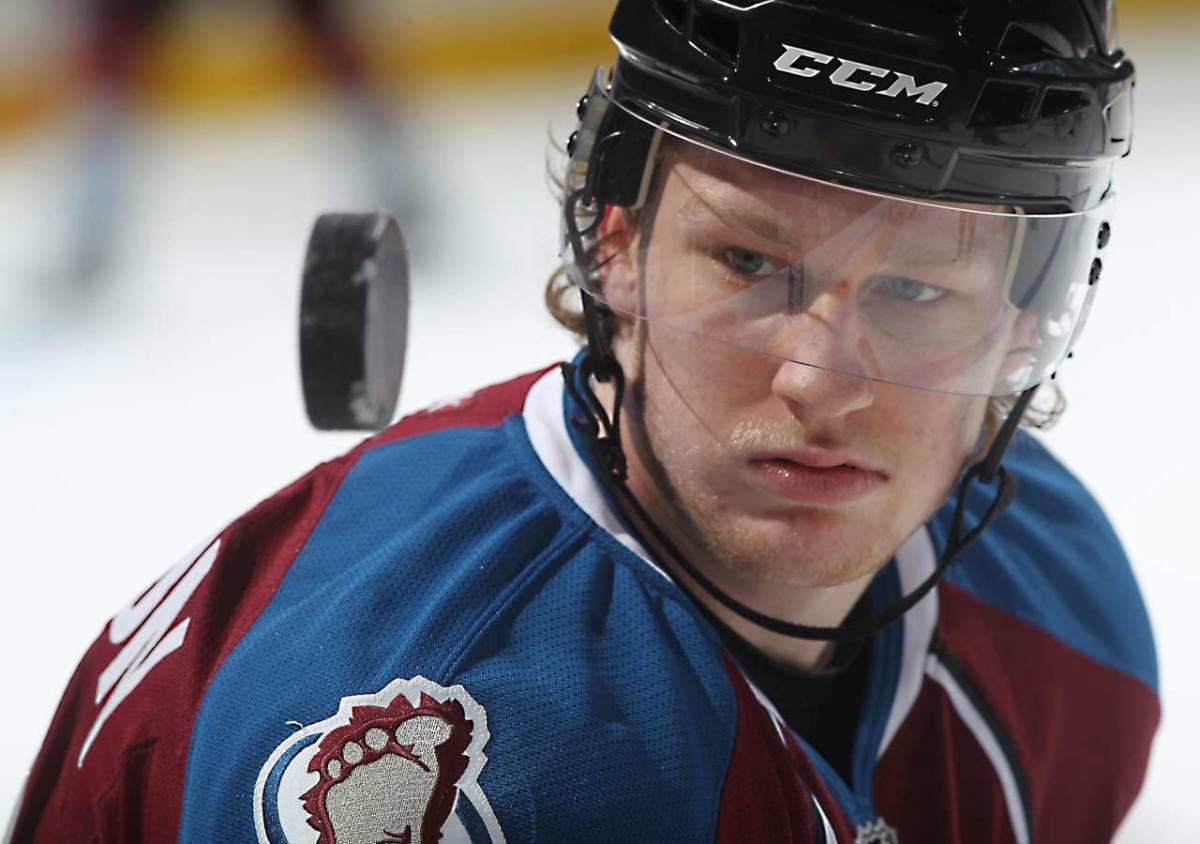
From Sidney Crosby’s hometown of Cole Harbour, Nova Scotia, MacKinnon was the first top pick out of the QMJHL since Crosby in 2005. Playing wing and center, this skilled scorer with great hands and solid two-way game won the 2014 Calder with a 24-39-63, +20 season, beating out two of Tampa Bay’s Triplets: Ondrej Palat (22) and Tyler Johnson (23). But at 19, he suffered a sophomore slump and was sidelined by a broken foot, his production declining to 14-24-38, -7.
Seth Jones, 19, 2013-14
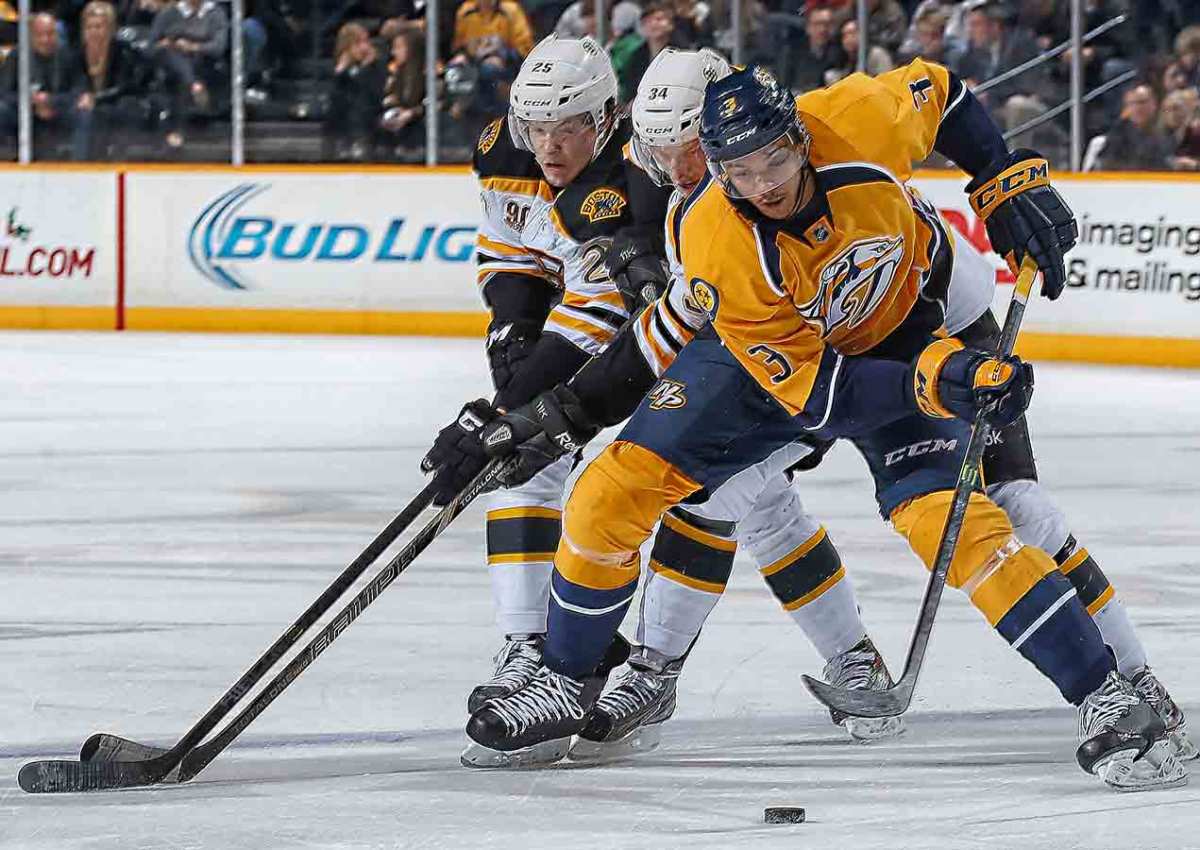
The celebrated son of ex-NBA player Popeye Jones looked like the possible No. 1 pick of 2013 before falling to No. 4 behind Nathan MacKinnon (Colorado), Aleksander Barkov (Florida) and Jonathan Drouin (Tampa Bay). A big (6’ 4’, 205), athletic blueliner, Jones went 6-19-25, -23 as a rookie while adjusting to his difficult position at the NHL level, earning 15 Calder votes (11th).
Aaron Ekblad, 18, 2014-15
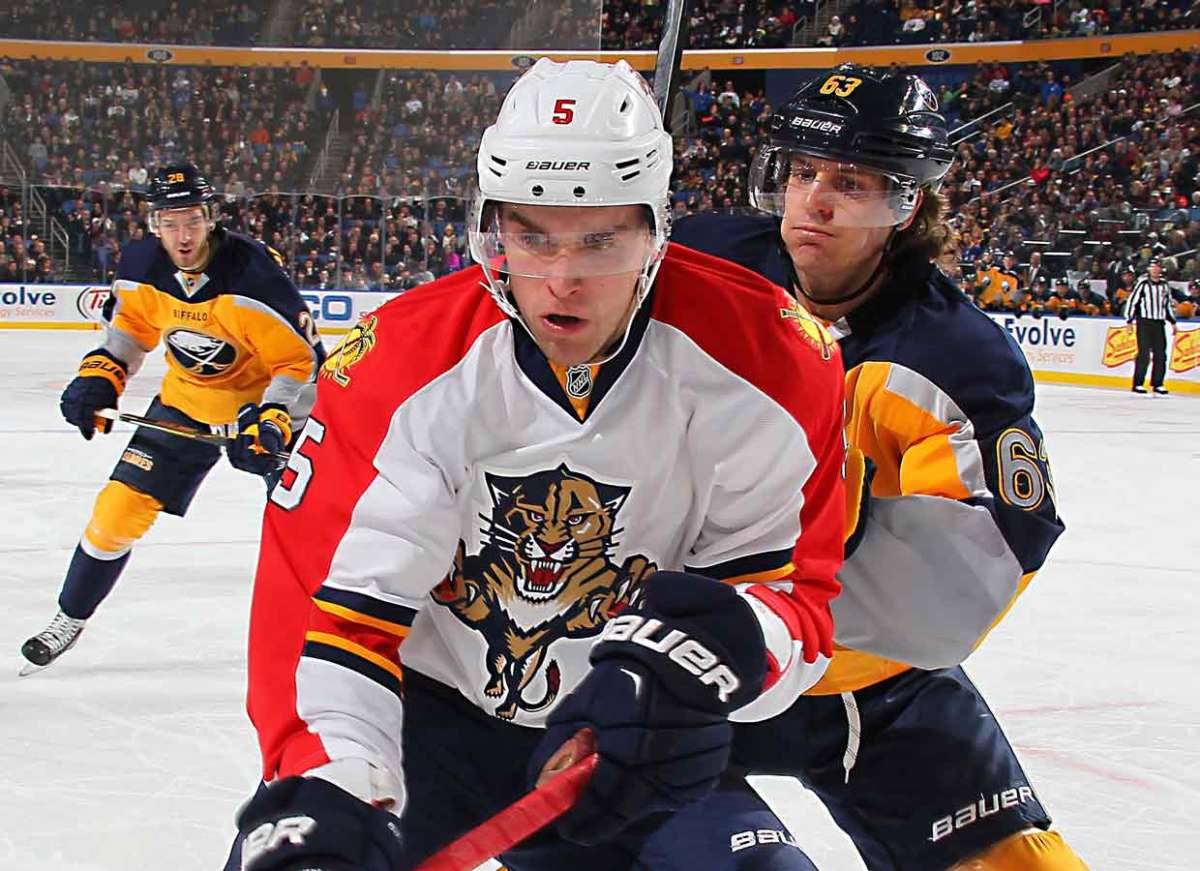
The second player to be given “exceptional” status by the OHL, and second defenseman since 1996 to be the NHL’s top pick, the uncannily mature Ekblad made a seamless transition, winning the Calder with 12-27-39, +12 rookie season. His 39 points were two shy of Bobby Orr’s NHL record for an 18-year-old blueliner and his offensive totals were all team rookie marks.
Connor McDavid and Jack Eichel
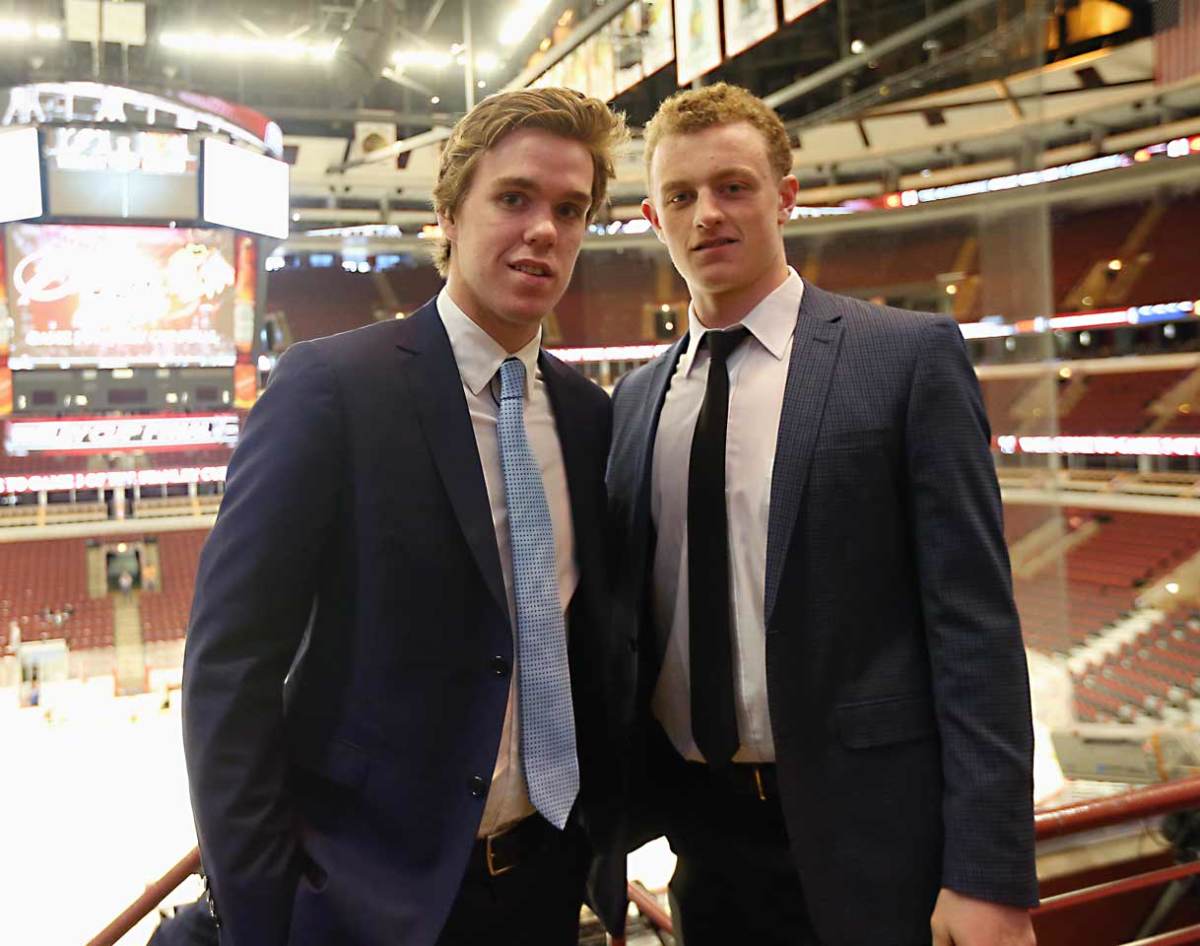
The two 18-year-old centers were so highly coveted ahead of the 2015 NHL Draft that teams were suspected to tanking in order to increase their chances of winning the lottery. McDavid, an OHL scoring sensation taken No. 1 by Edmonton, inspired Hall of Famer Dale Hawerchuk to say, “He skates like Bobby Orr. He has the vision of Wayne Gretzky. And he handles the puck like Mario Lemieux.” An NHL scout said of Boston University standout Eichel, who went No. 2 to Buffalo, “It’s not just his speed; it’s his skill, his hockey sense. It doesn’t even look like he’s trying, but the puck comes to him. He makes things happen.”
